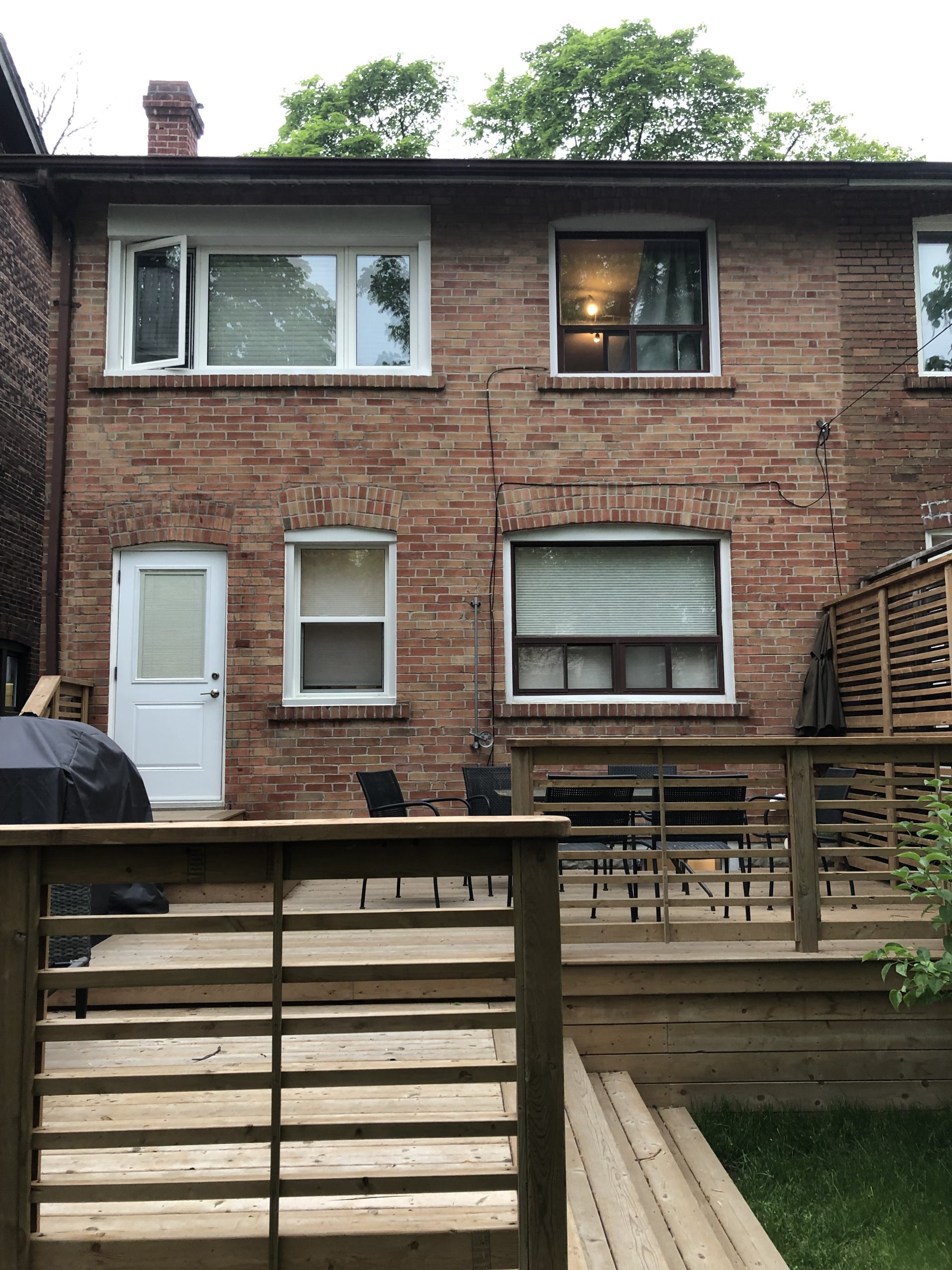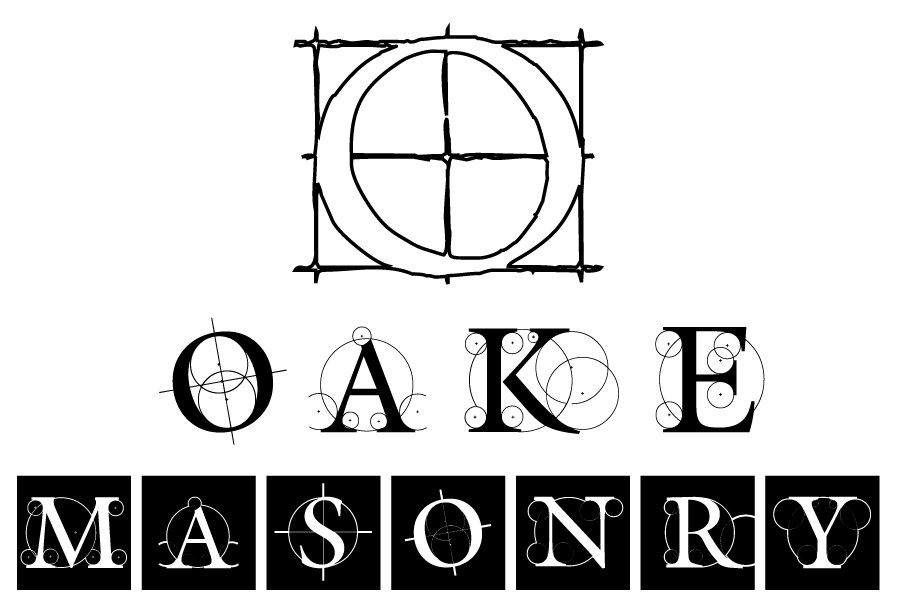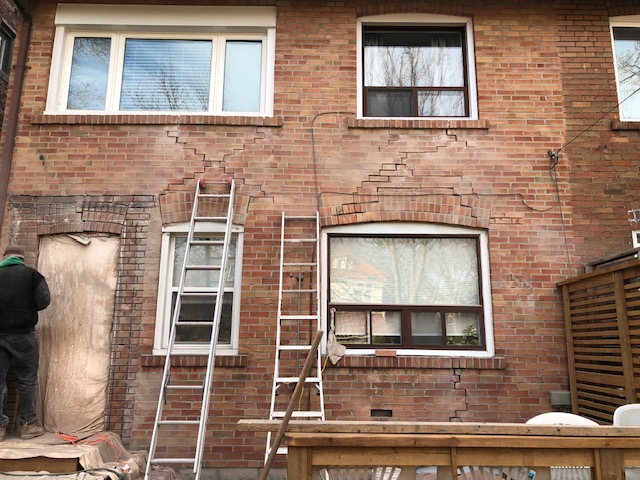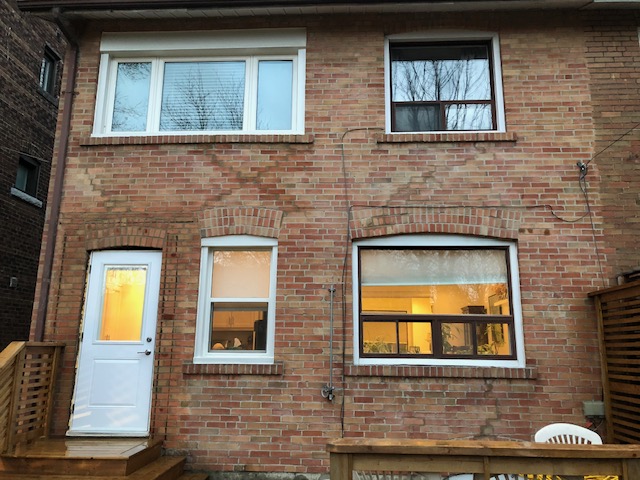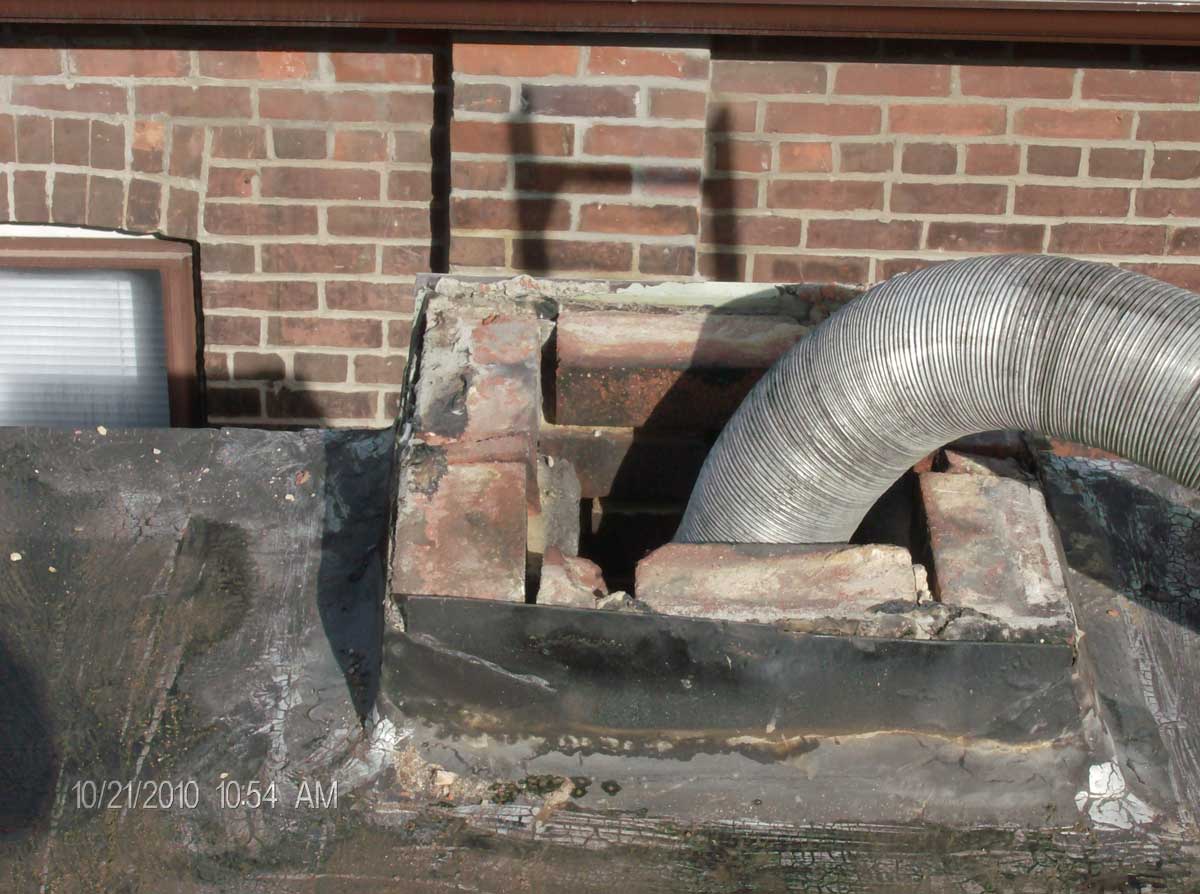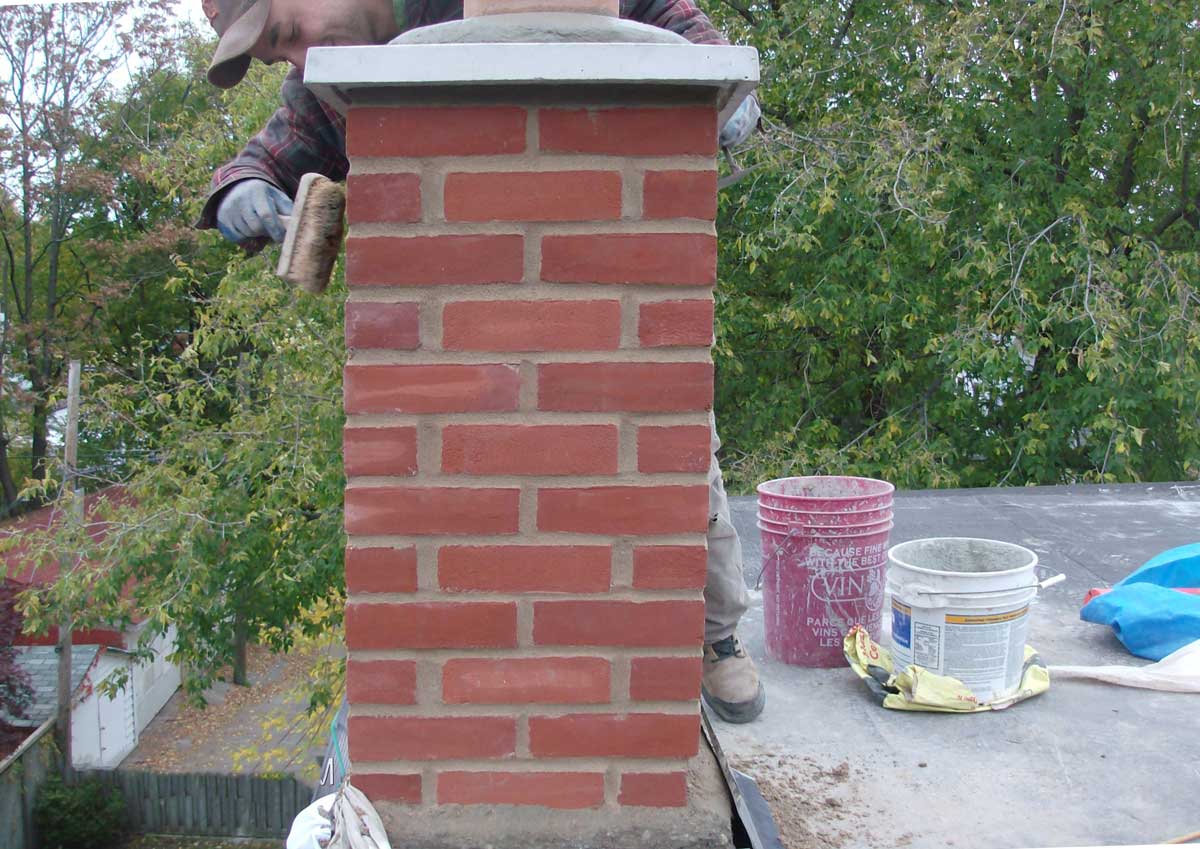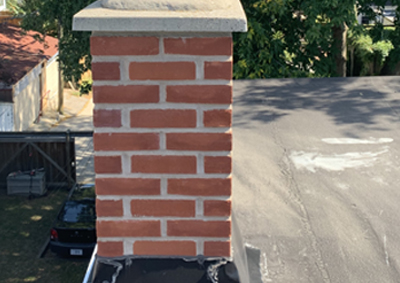“BEFORE & AFTER”
I took these pictures throughout the years. These are jobs I have done in the Greater Toronto Area. Excuse the quality of the pictures, most of these are from now-antiquated cameras - I assure you the quality of work is great! : )
A seamless restoration job. These pics are taken right after the bricks were laid so the mortar is fresh.
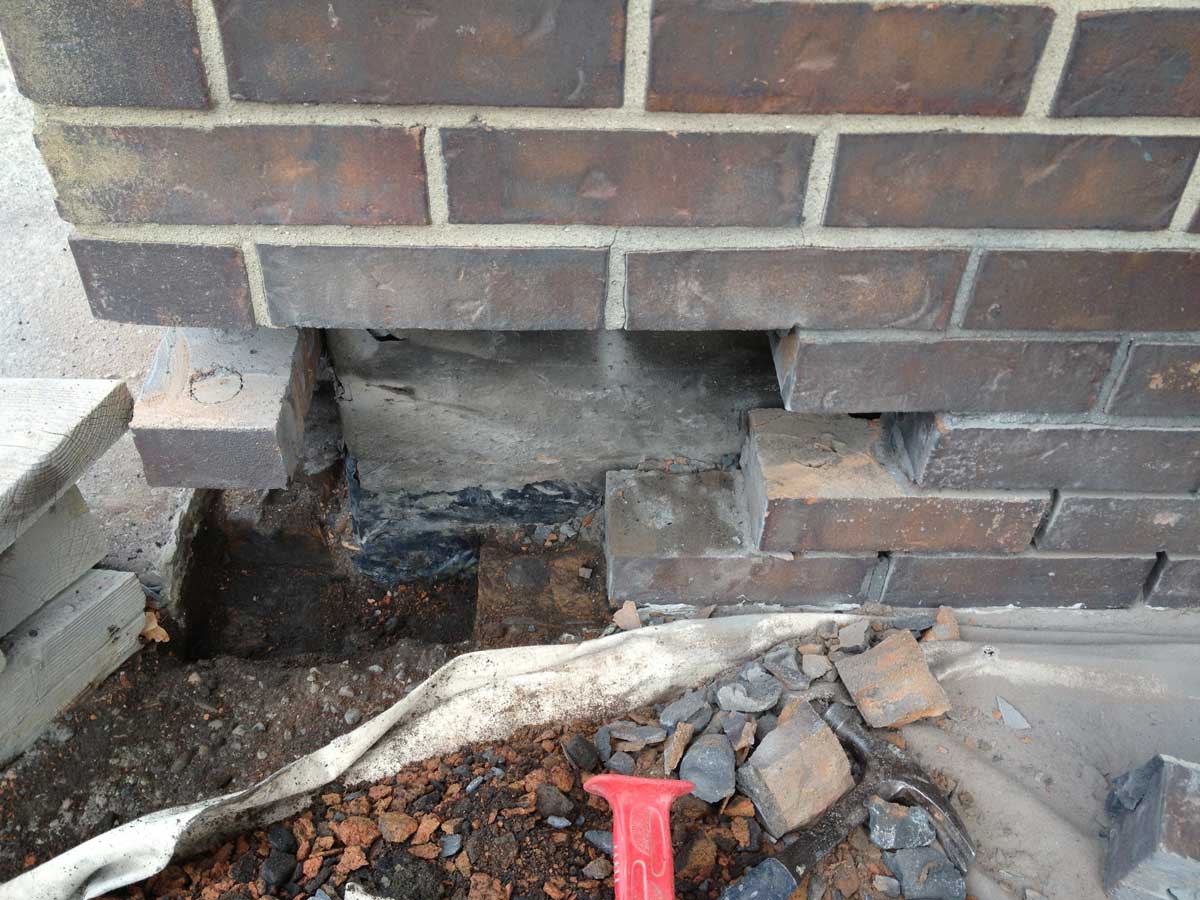
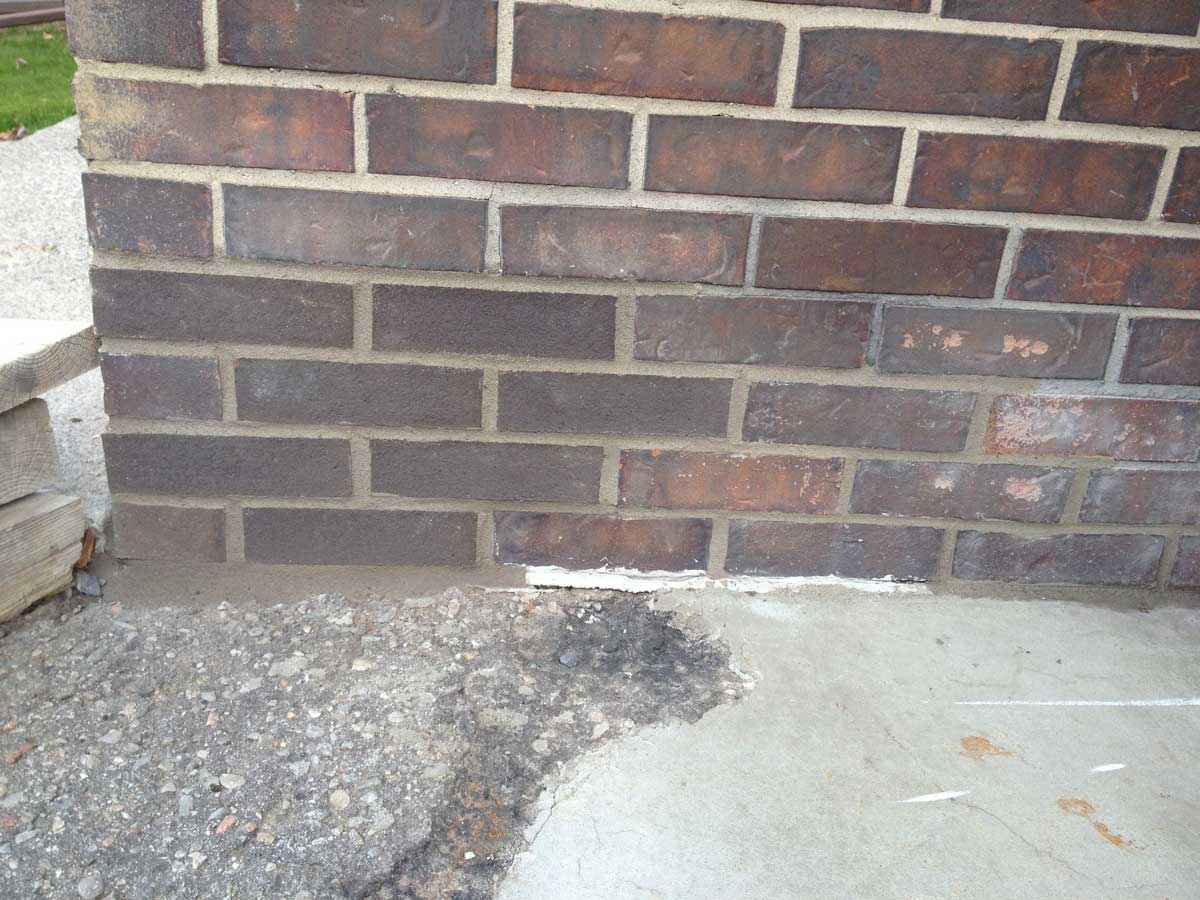
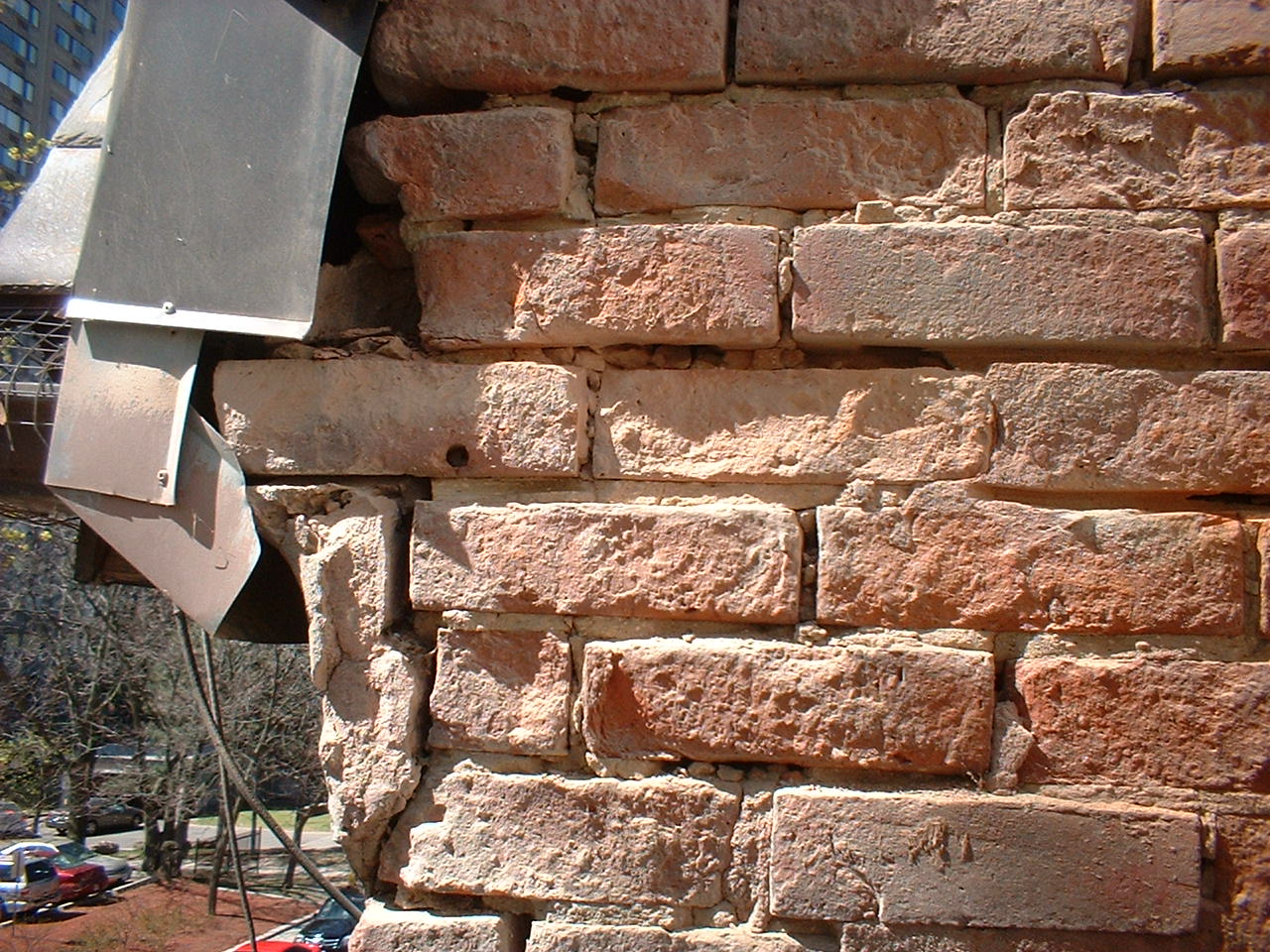
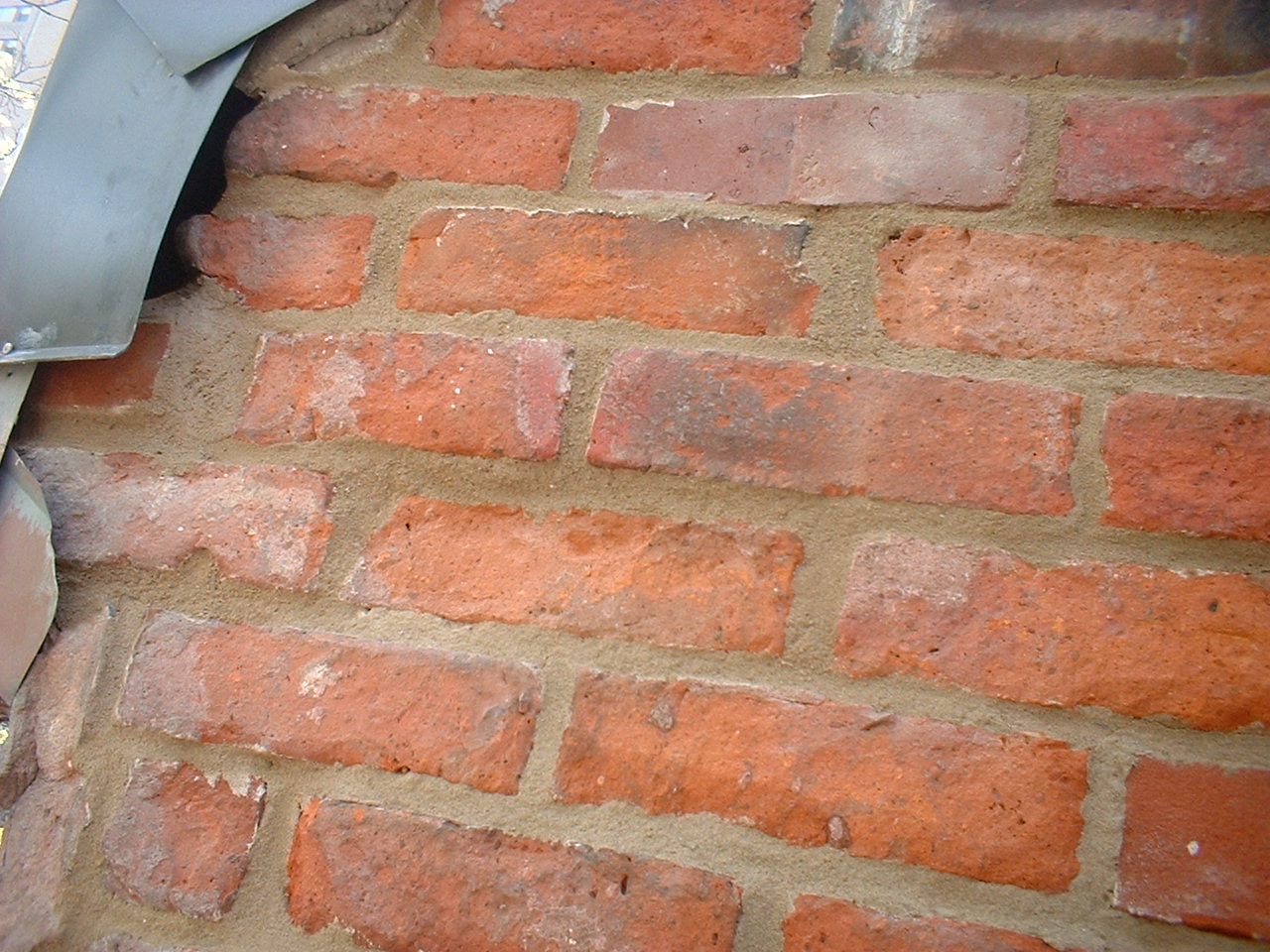
Chimney deterioration ground out and repointing with mortar tinted to blend with the original.
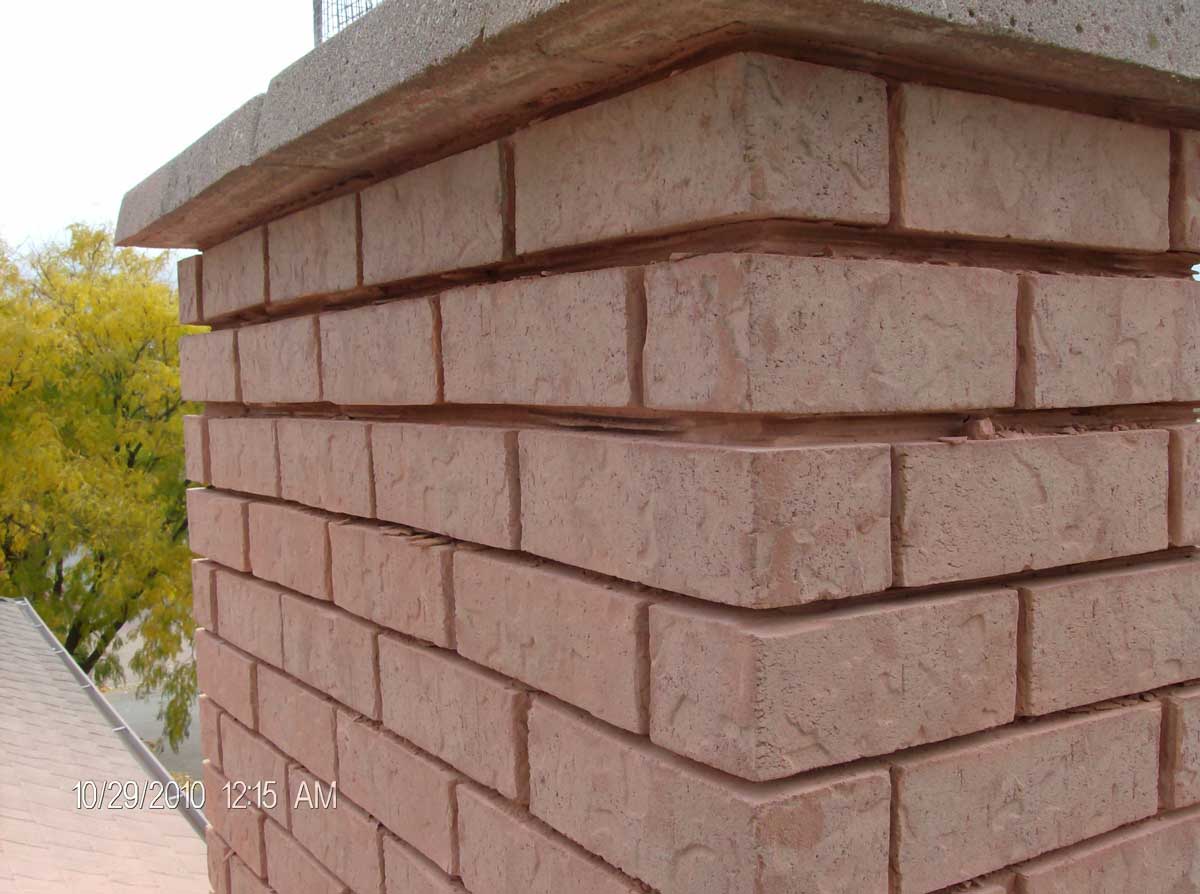
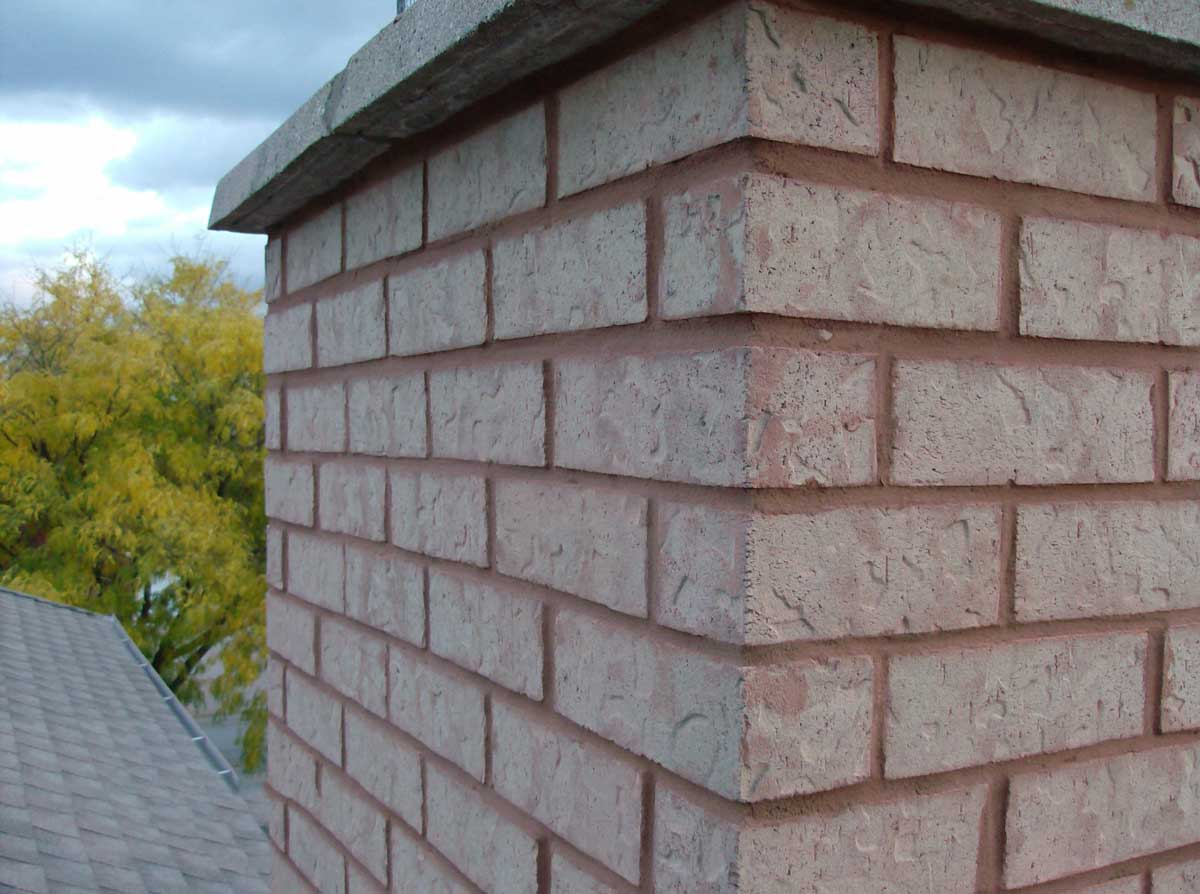
Chimney rebuild: These are straightforward, can safely reach the work and remove the original (sometimes they are incorrectly engineered) and build one thoroughly, correctly (for Canadian weather) that has a sufficient drip edge to promote water dripping away from the bricks which promotes it having a long life. Anyone can build a chimney – I build them to last!
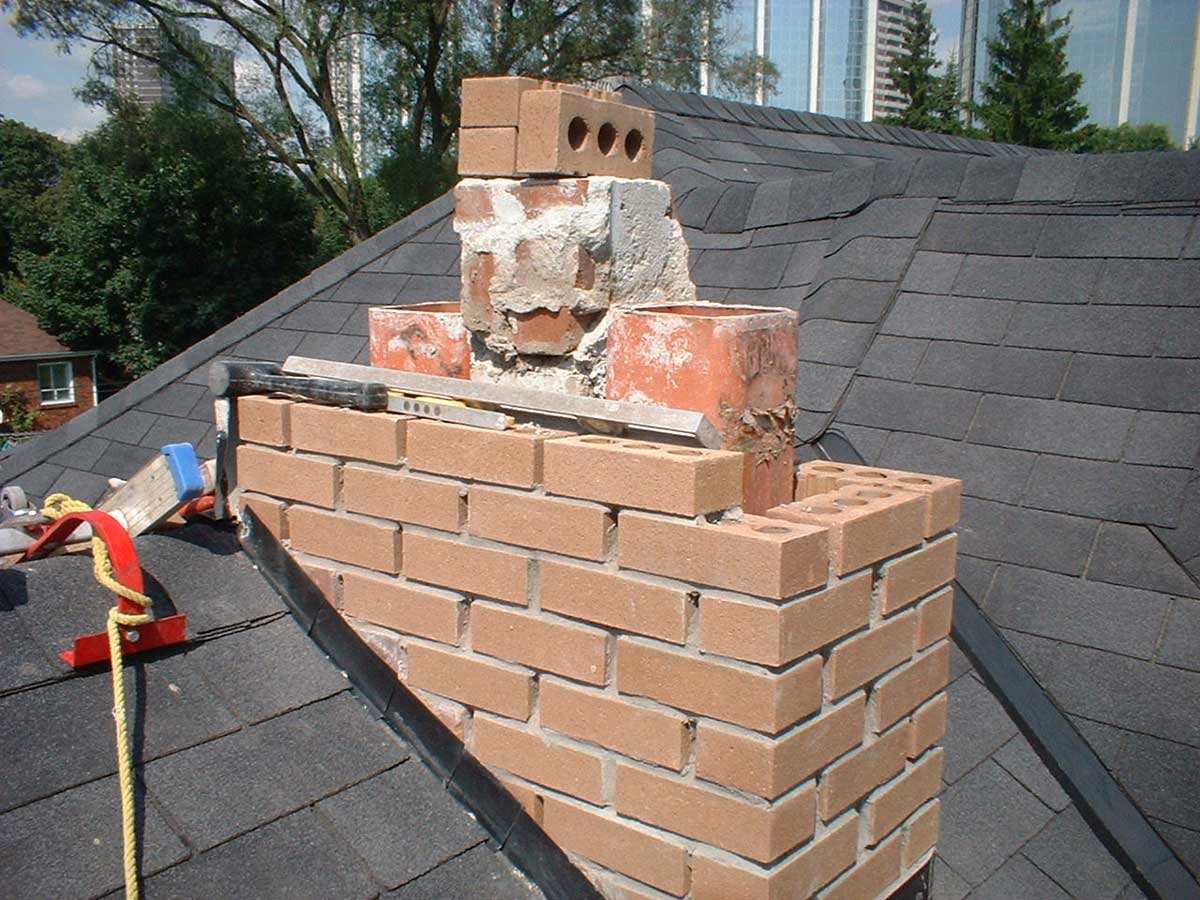
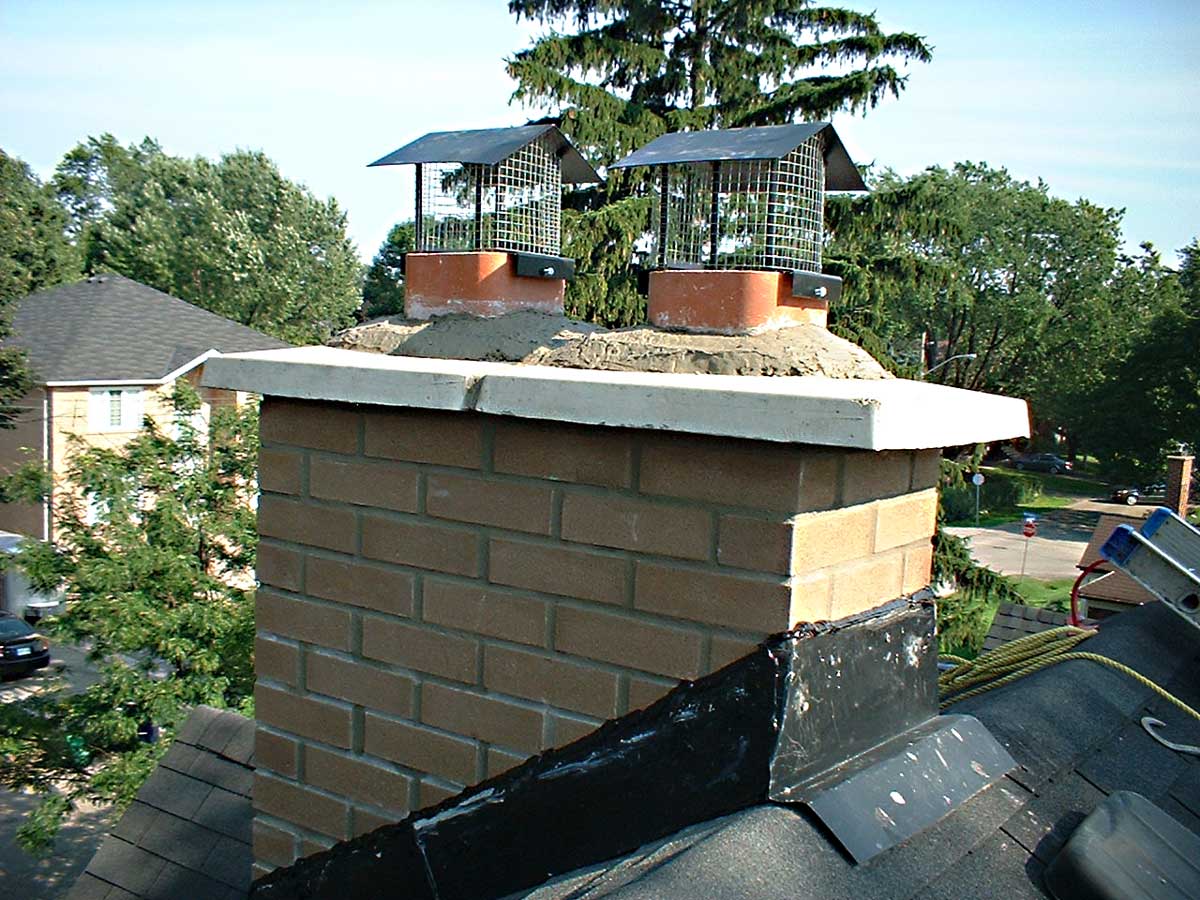
Spot tuckpointing holes and deep joints: colour matching mortar isn’t rocket science. However, it takes some interest, knowledge and sometimes a number of tests in different areas. Many Mason’s just don’t do it!
Mortar laid tens of years to a century ago, ages and discolours differently on the same home. There aren’t premixes that makes this simple. I strive to make the best possible blend in the different areas the mortar has evolved into due to weather, water, pollution and oxidation. I also provide “full grind and re-point” where all the mortar (to a max depth of an inch) is removed. This can be done between the bricks, in chimneys, walls, pillars, etc. This will allow us to make a uniform mortar that will change the face of any area where this is needed. Usually this is unneeded.
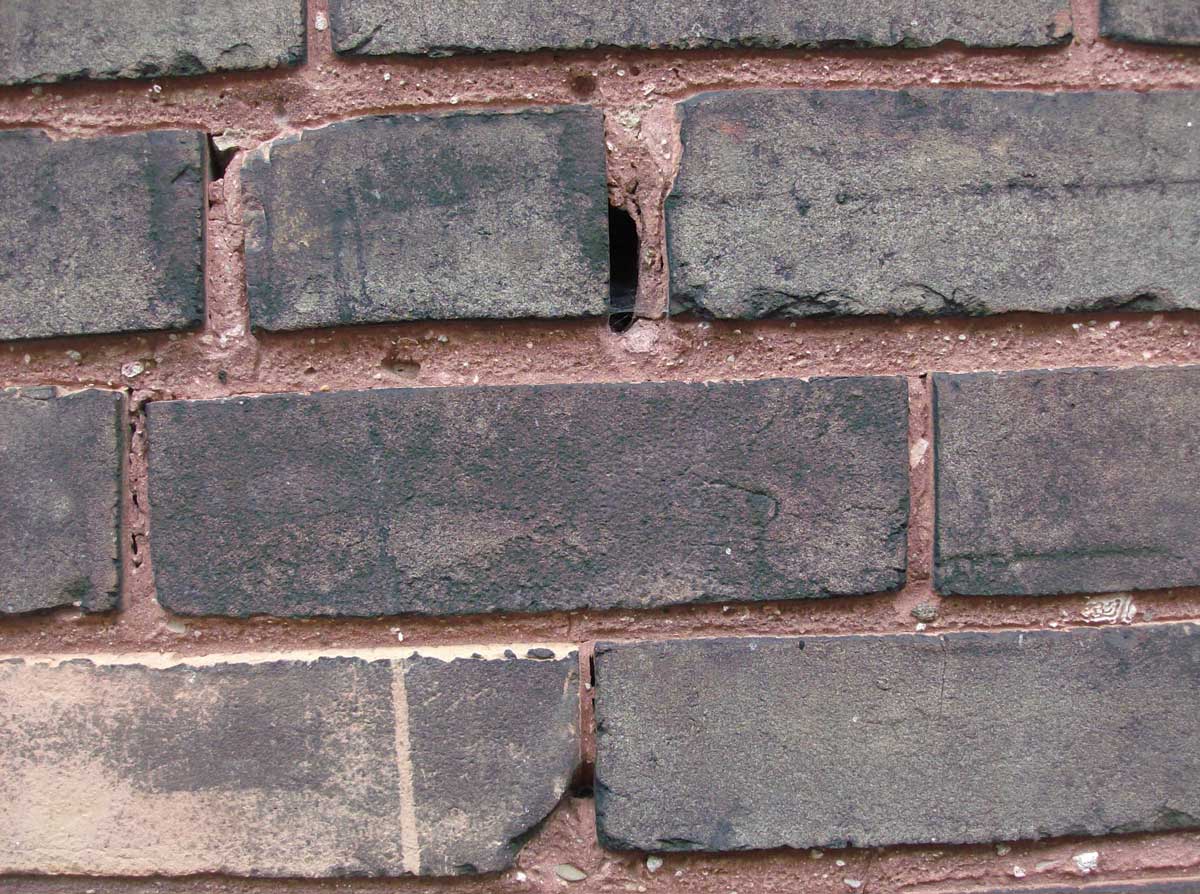
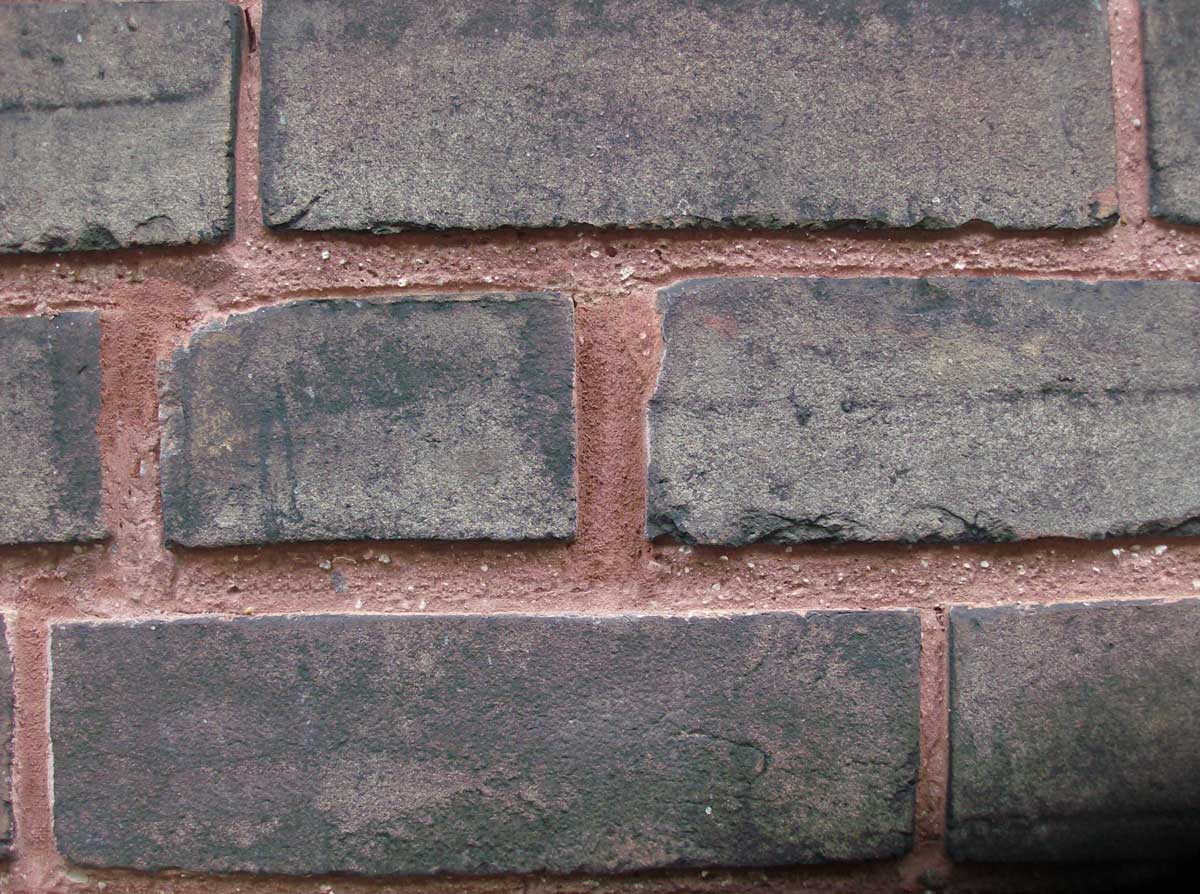
Window sill replacement. (Original sill was made of wood – not shown, brick laid in and tinted to match)
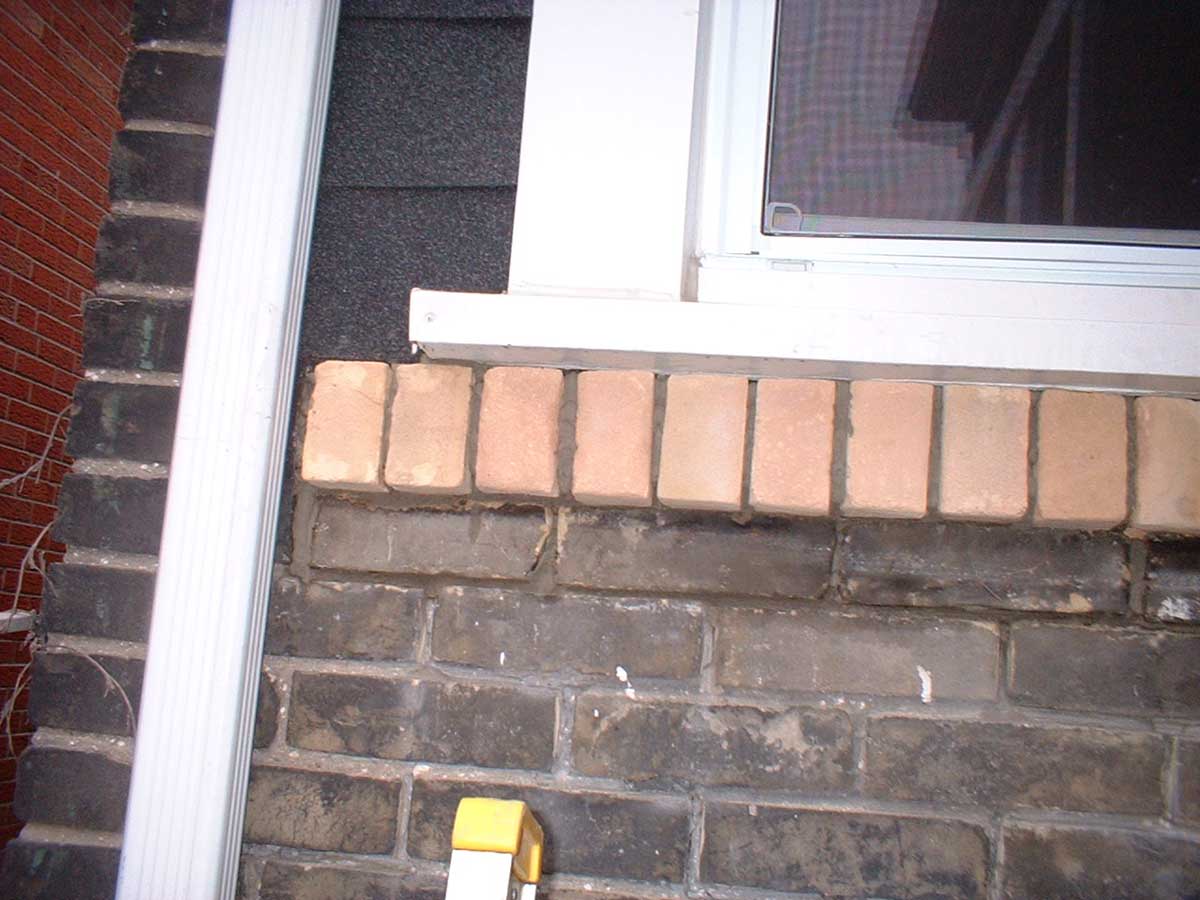
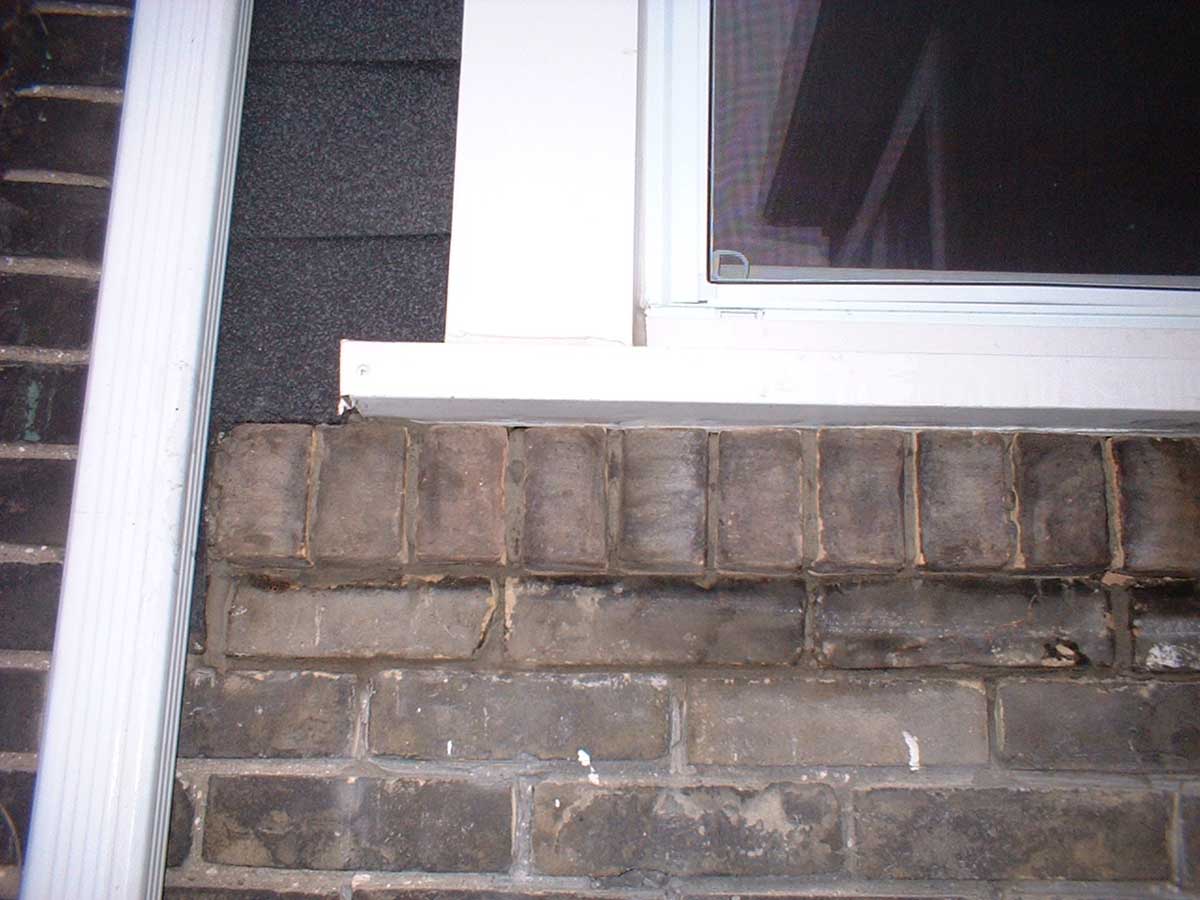
Failing block wall taken out: There was a concrete staircase pushing the wall in. I removed the impediment and laid in a new block wall. This was inside a house, in the basement hence the bad pictures. Masonry is dusty!
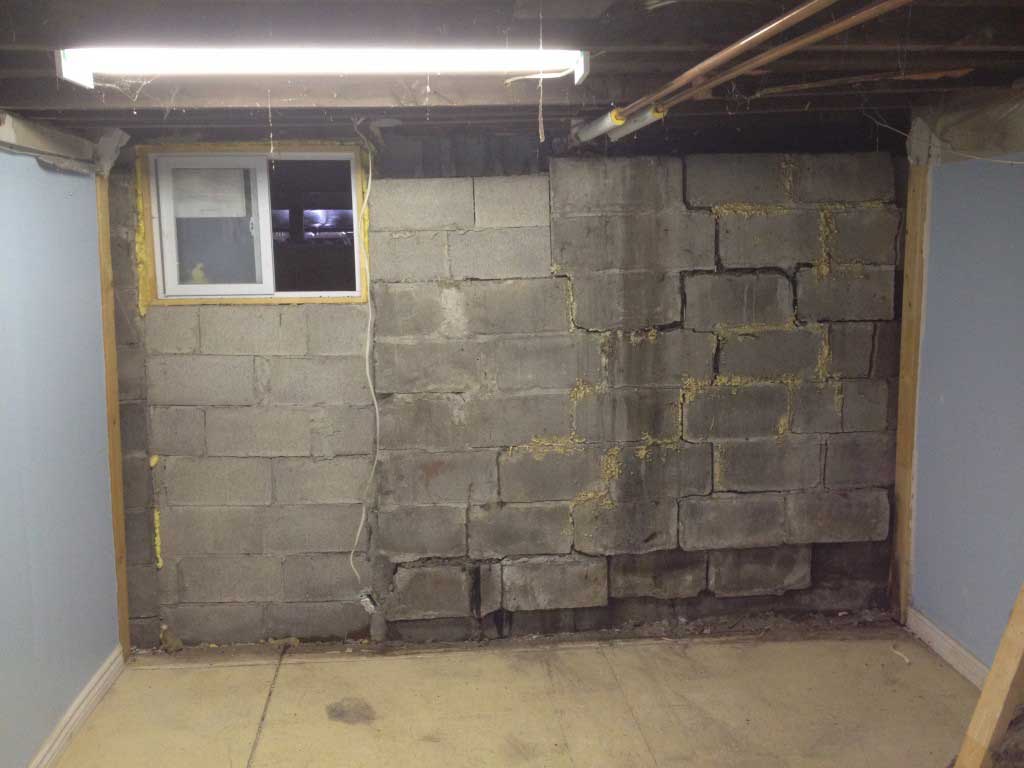
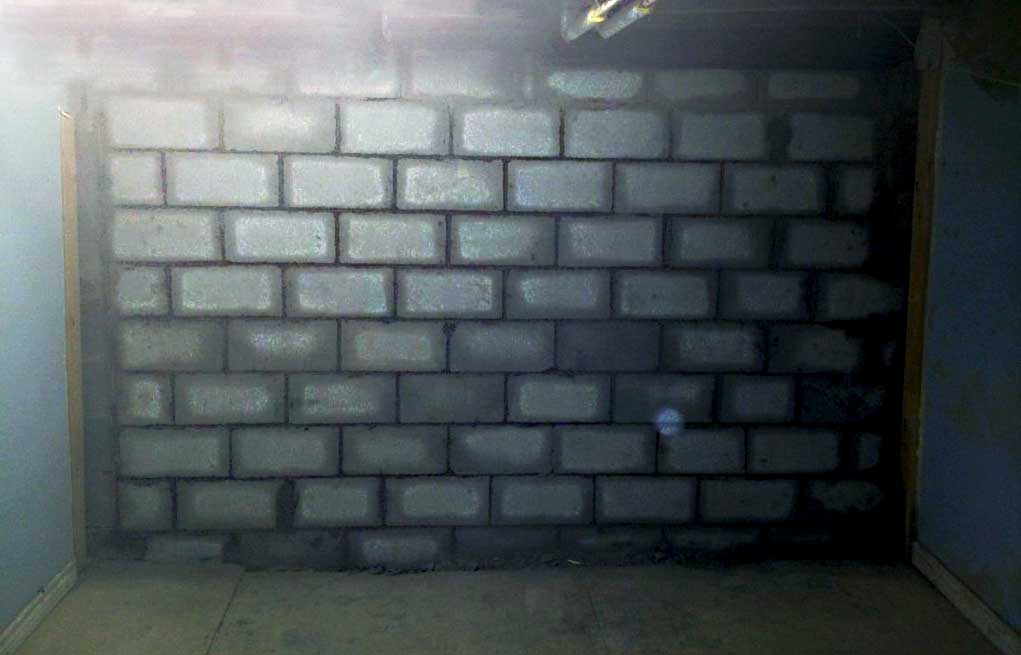
Another example of brick replacement up high, with vintage bricks: Older bricks are more resilient to the weather Mother Nature throws at it and so, repairs don’t necessarily require new bricks. I reclaim bricks to exact seamless work. New bricks stand out and this makes areas look odd. This is avoided where possible. Additionally, I contour mortar around the replaced bricks to make the “new bricks” disappear. I swear, all the bad jobs I see on homes simply need a little of this technique and then it wouldn’t stand out!

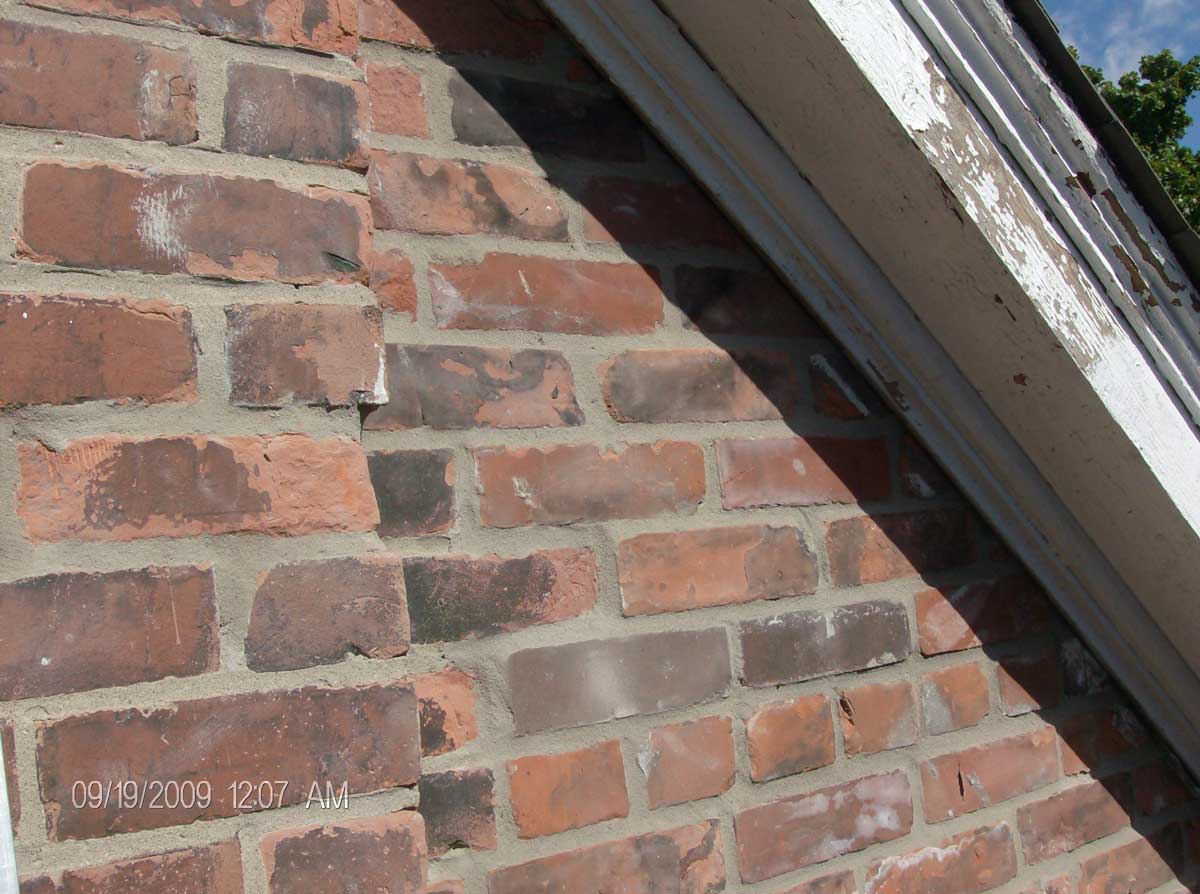
Brick replacement on chimney hip: damage occurred as a result of dripping water from a leaky eaves trough. Restoration entailed identifying where good bricks meet deteriorated ones to get the scope of work to give an accurate price.
I employ techniques to cut out mortar between good and bad bricks so as to not damage good bricks with jack hammer vibrations. This means costs stay within the scope of work estimated so both the client and I are in accord!
Each deteriorated brick was “surgically” removed and replaced with a closely matching brick. Unfortunately, the original brick was no longer being manufactured nor available at suppliers.
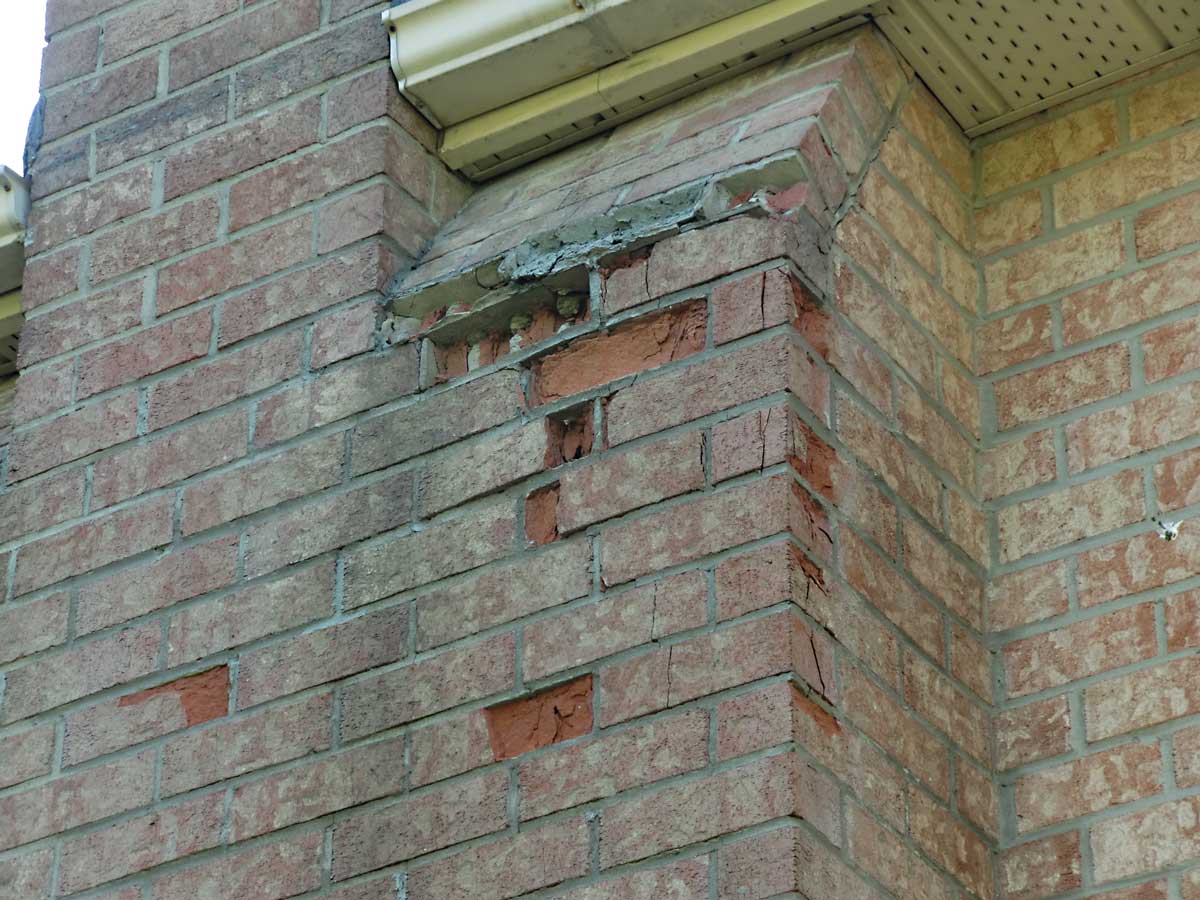
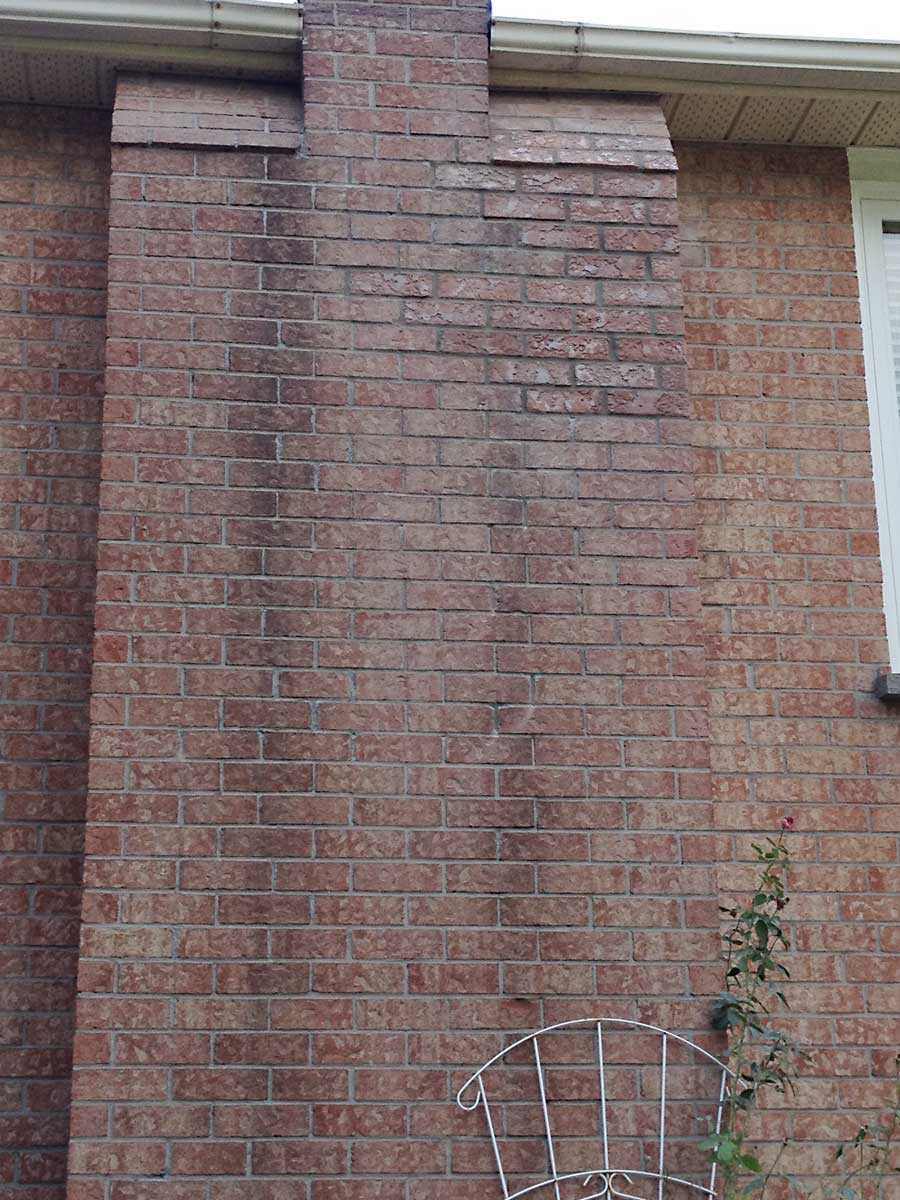
Deteriorated Chimney video link below: this shows a failed chimney and how easy it is to take apart. These are dangerous since they are above us! Just imagine a bad windstorm and how easy these come apart – scary!
Below is the chimney removed and then the final product. I used a premium brick so this lasts for many years.
Chimney rebuild: Removed badly engineered/failing chimney and rebuilt a better chimney. Added a prefabricated concrete cap and a dome of concrete around the flue and over the cap to seal and solidify the top. Longevity!
Failing 100+ year old concrete window sill and a custom concrete replacement: I can get stone or concrete sills for this application.
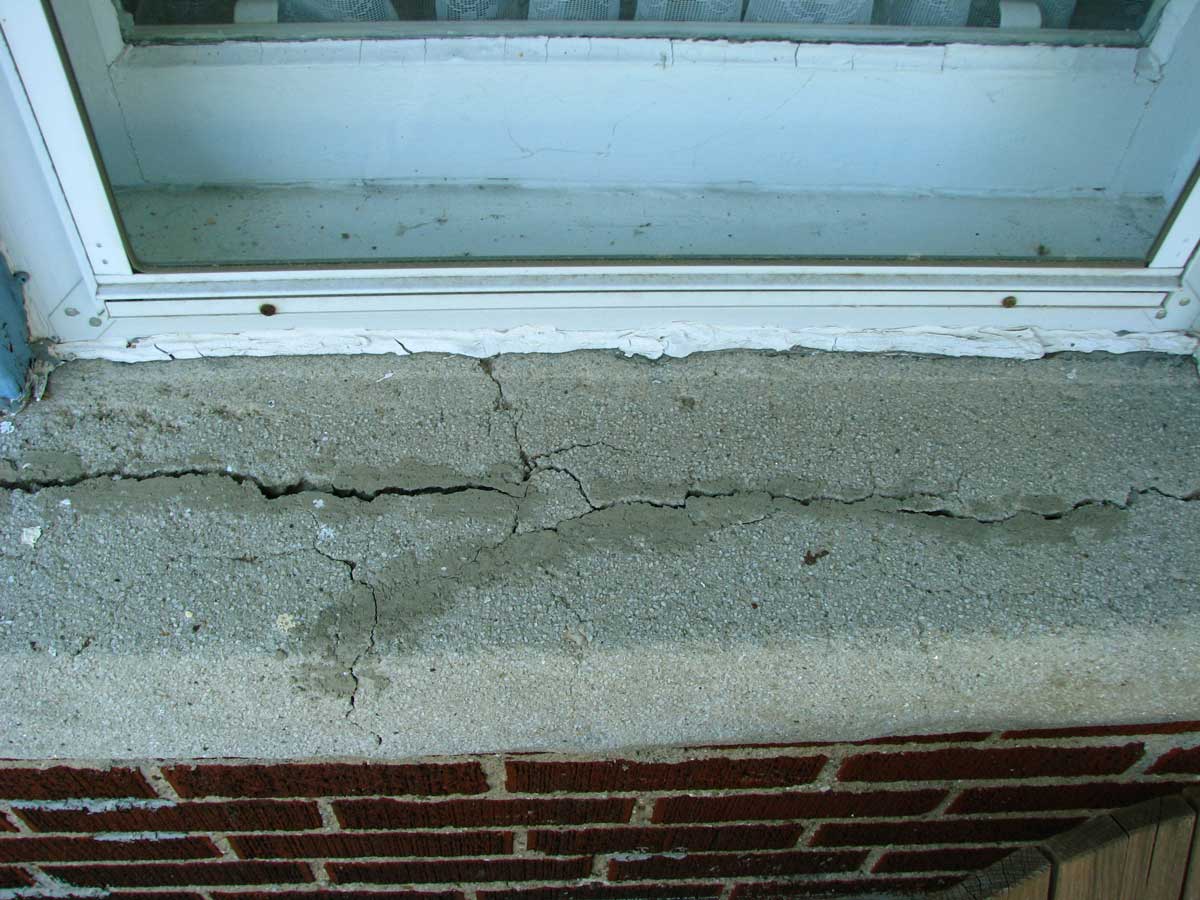
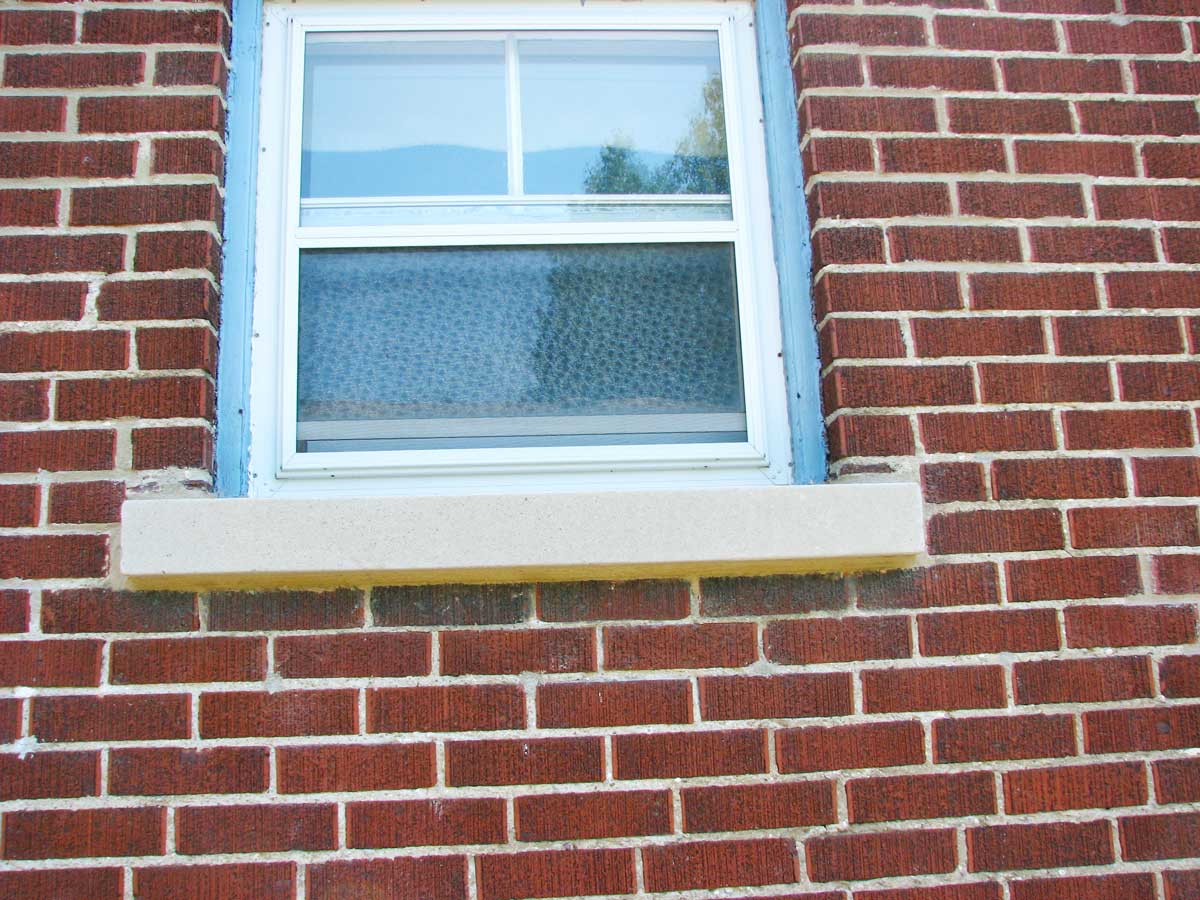
Failing threshold: I added a stone replacement: This was my idea of how to replace the failed concrete under the front door. The client loves this work. No messy forms and messy concrete mix. The sill could be stepped on after a couple days of curing.
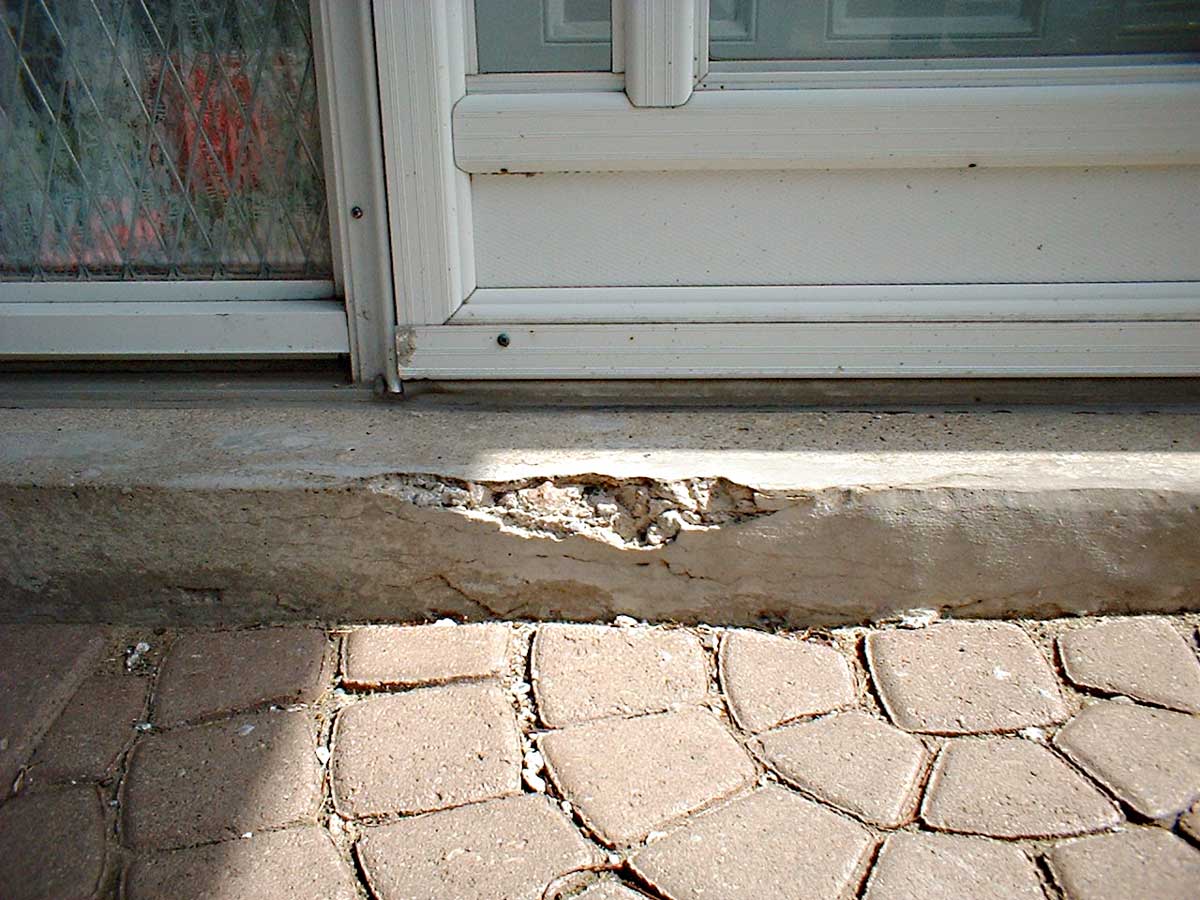
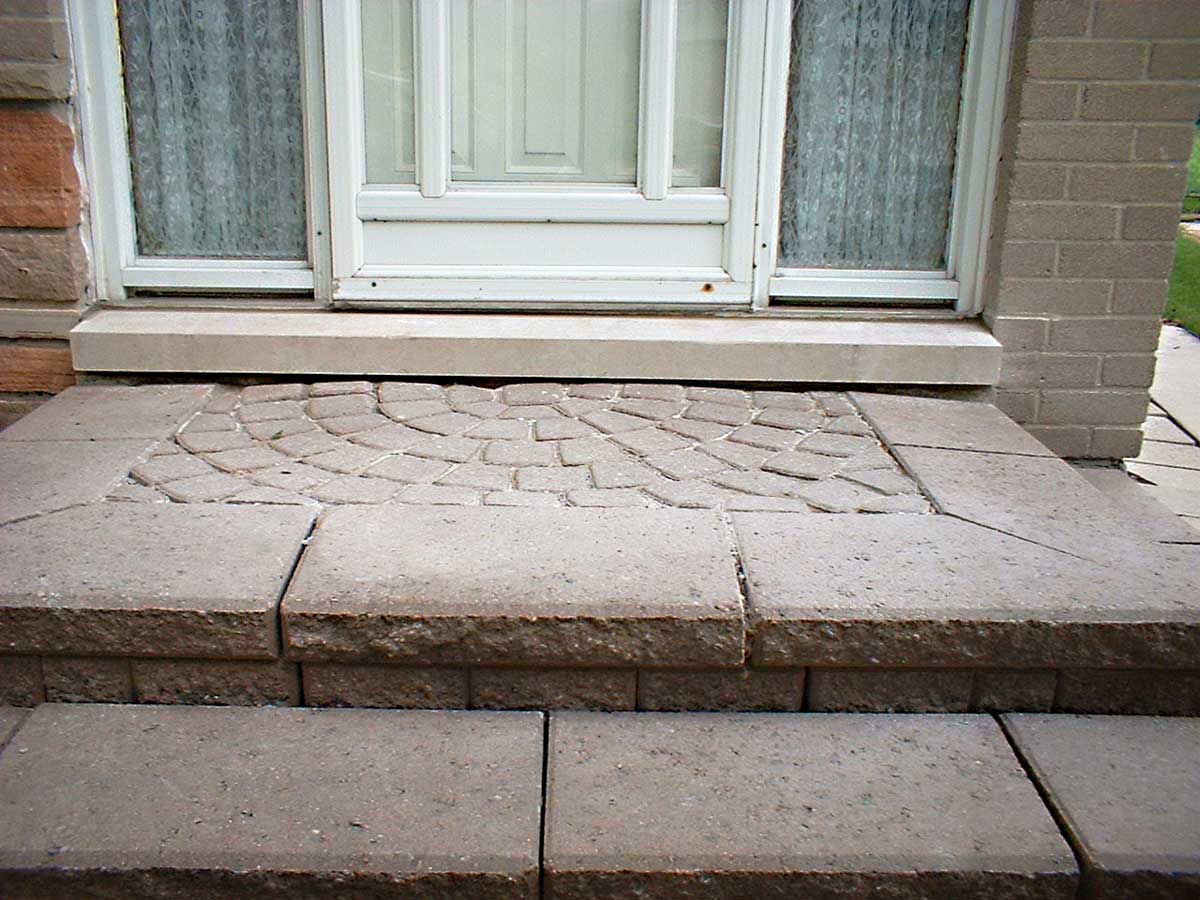
Deteriorated bricks with interlock stairs removed. Wall bricks replaced, the wall restored and the stairs rebuilt giving it all new life.
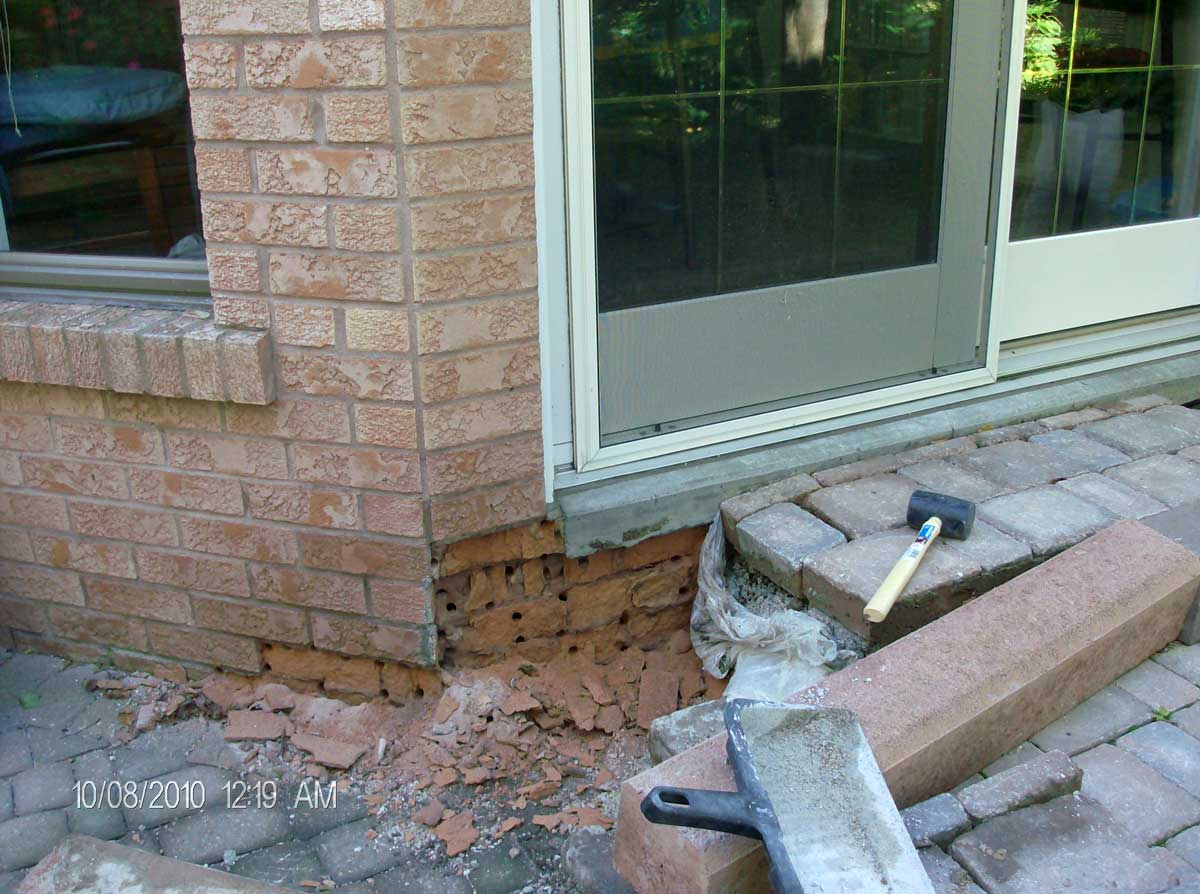

Failing brick window sill replaced with custom concrete window sill pieces.
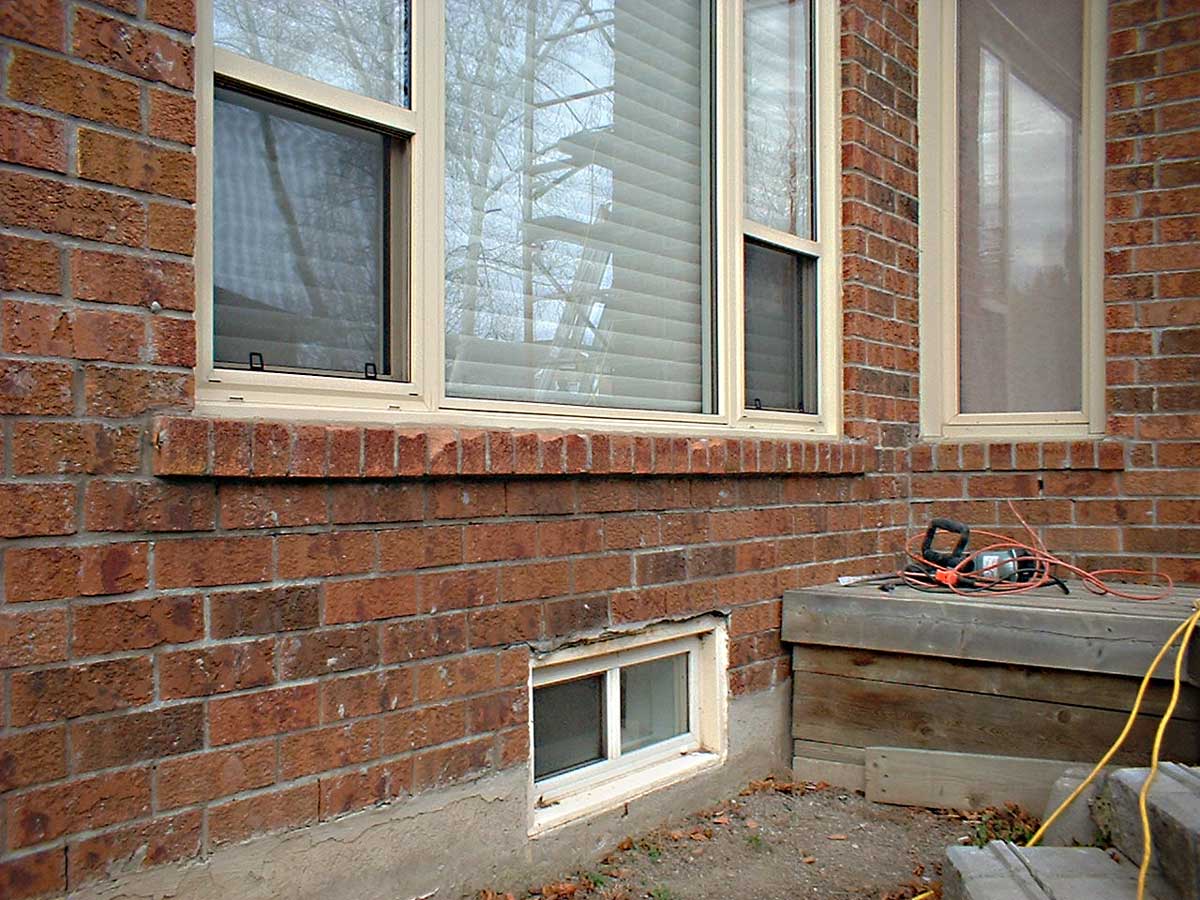
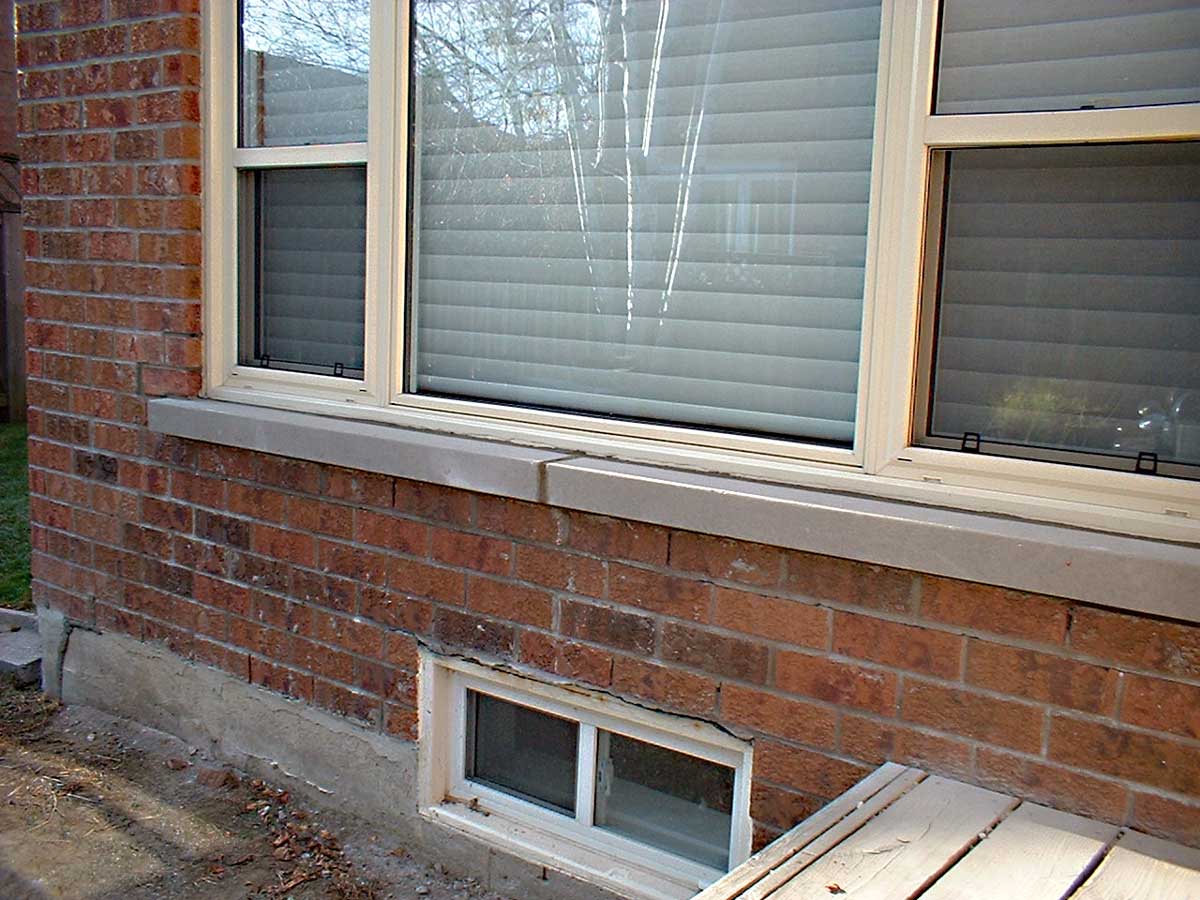
Porch restoration: brick and blocks rebuilt ready for the Concrete Contractor to pour the concrete porch slab. See the clients review under “Referrals” tab. “Don in North Toronto”
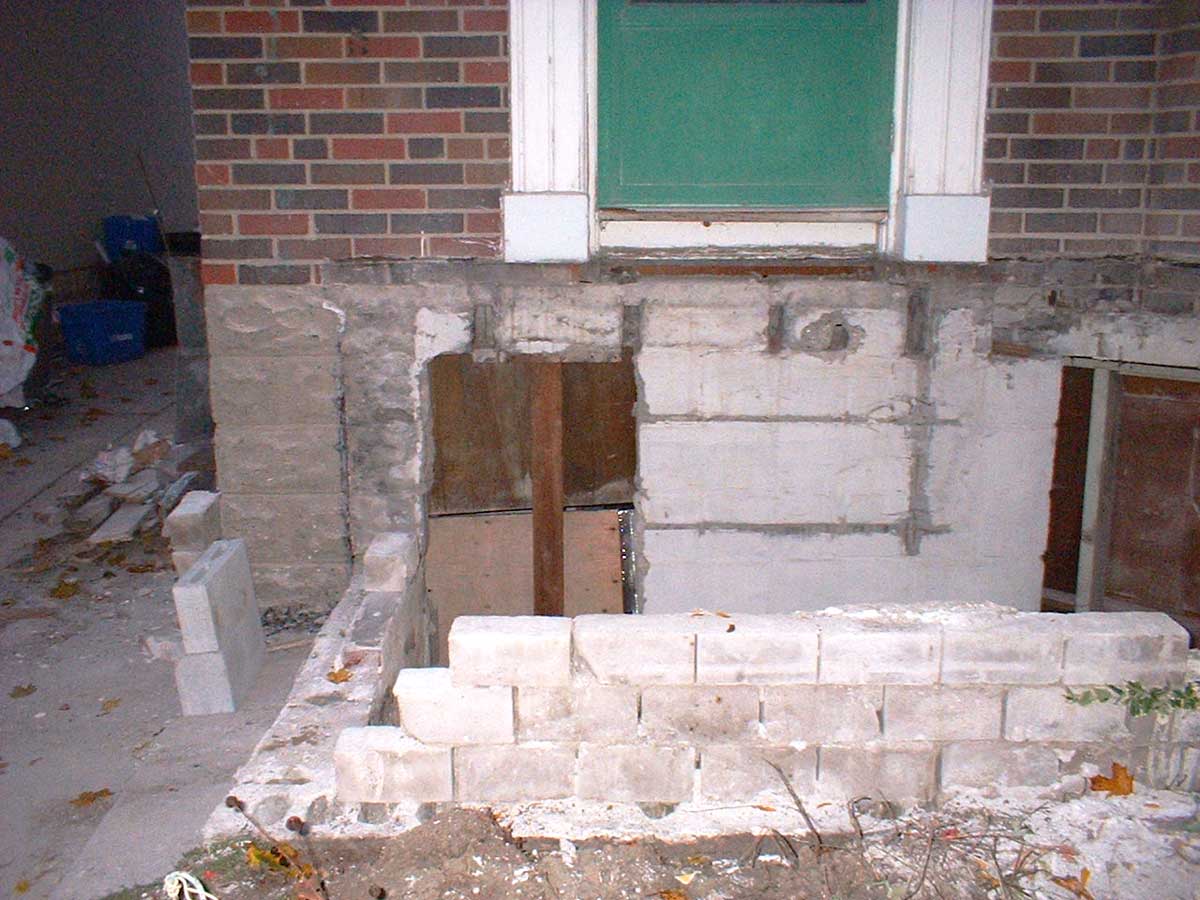
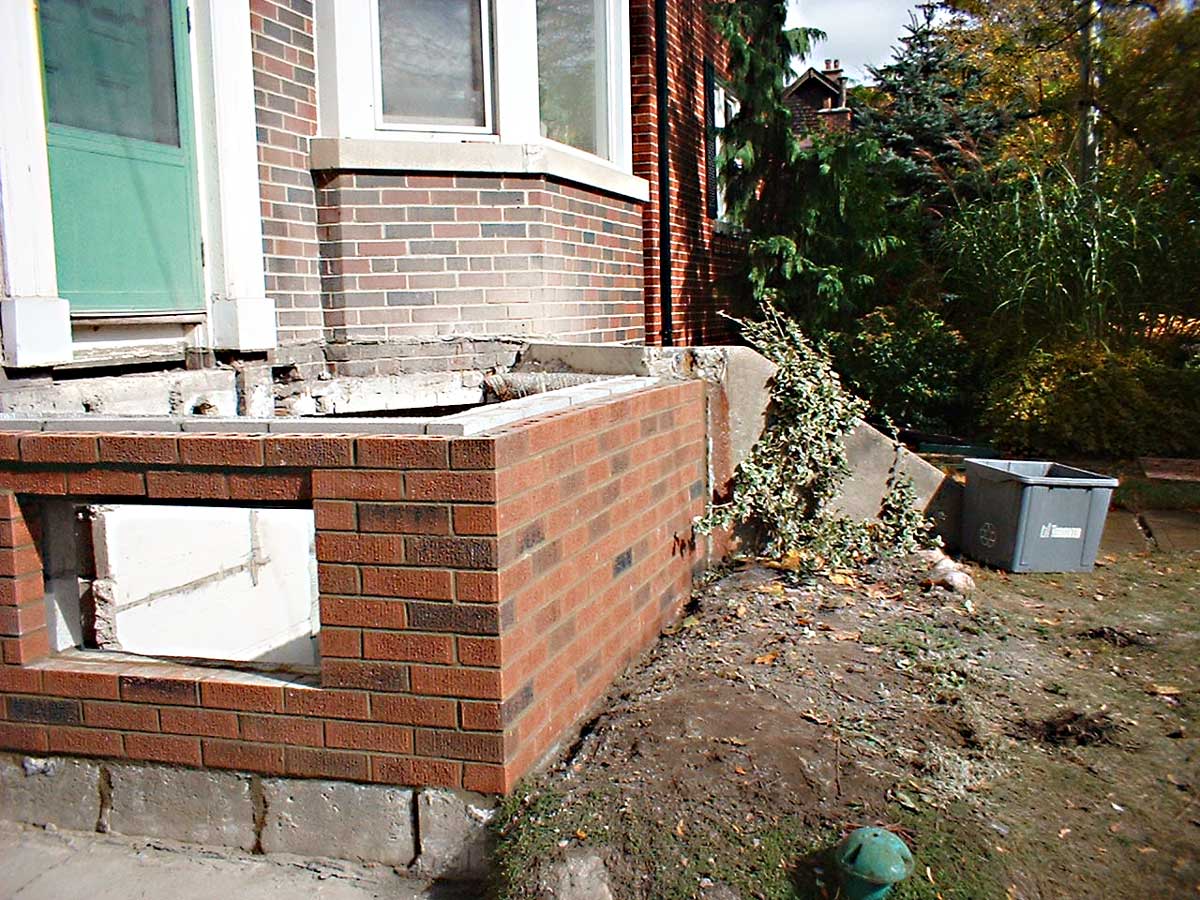
Chimney restoration: Grinding and re-pointing: Before and after.
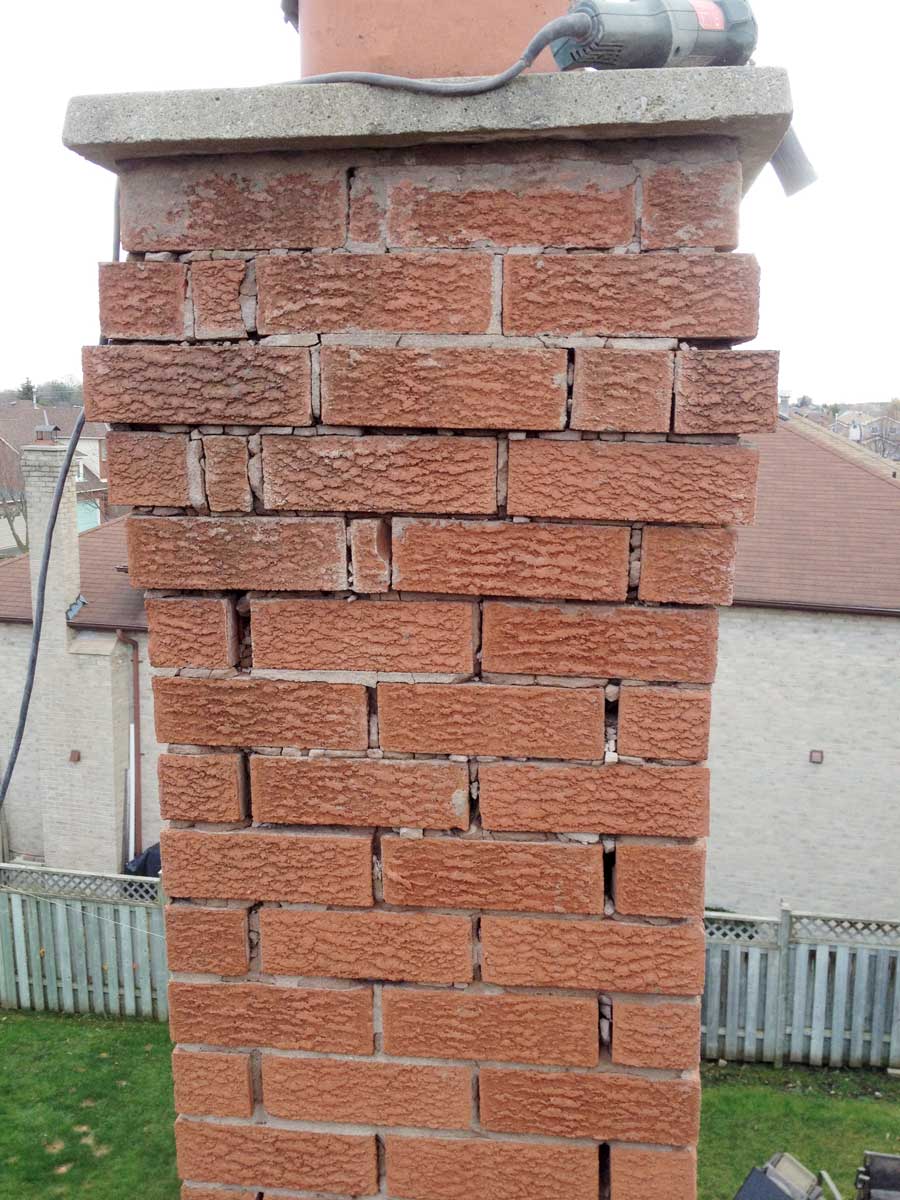
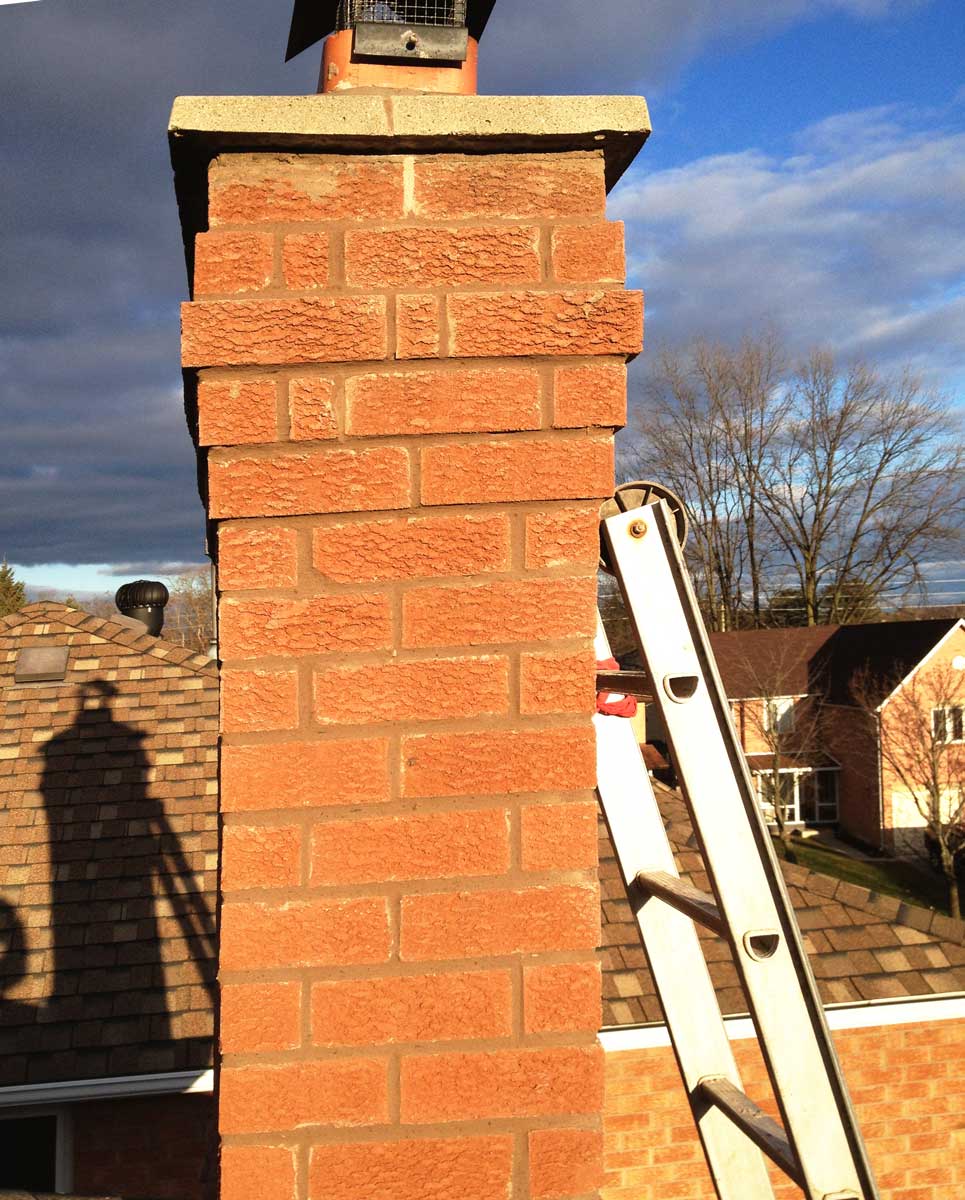
Porch wall caved in: A large hole developed after many years of decay. Luckily, the client saved pieces of the “stone” facade that fell off. This was fortuitous as I reused these pieces after I rebuilt the porch side (with concrete blocks and bricks). I only had to fabricate a couple small replacement pieces which allowed me to make this work look original / whole, saving them from a large job and expense. I do what I can.
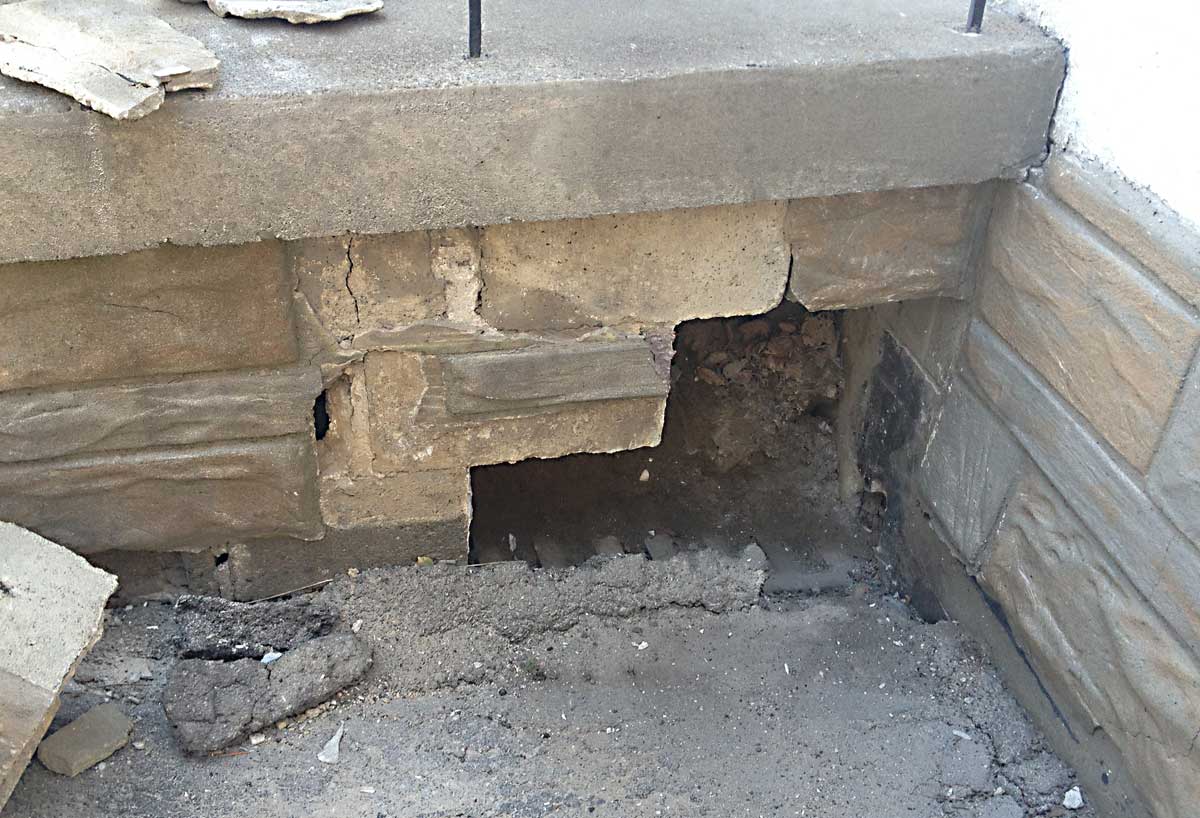
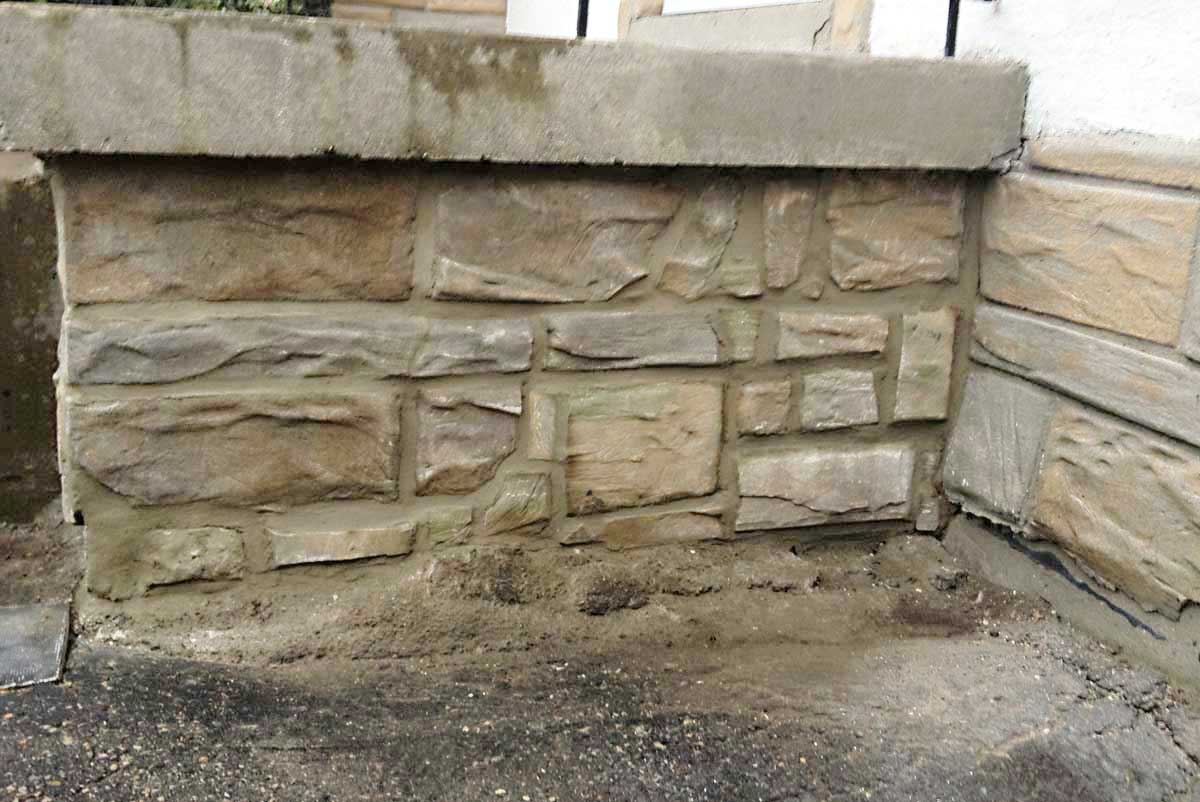
Porch wall that was covered in a man made stone façade: I was called in to assess the porch for a solution. It was to remove the “stone” facade called “Angelstone” as it had failed and couldn’t be saved. I removed the nails, mesh, rust and patched the holes and divots. Then added a masonry coating to make it all uniform. *** This is still in perfect shape today – I believe it was 7 years ago now (June 2019 today). It doesn’t have to be painted and re-painted. This solution was the least amount of upkeep and the most cost saving solution with the most aesthetics. It was a perfect solution for them.
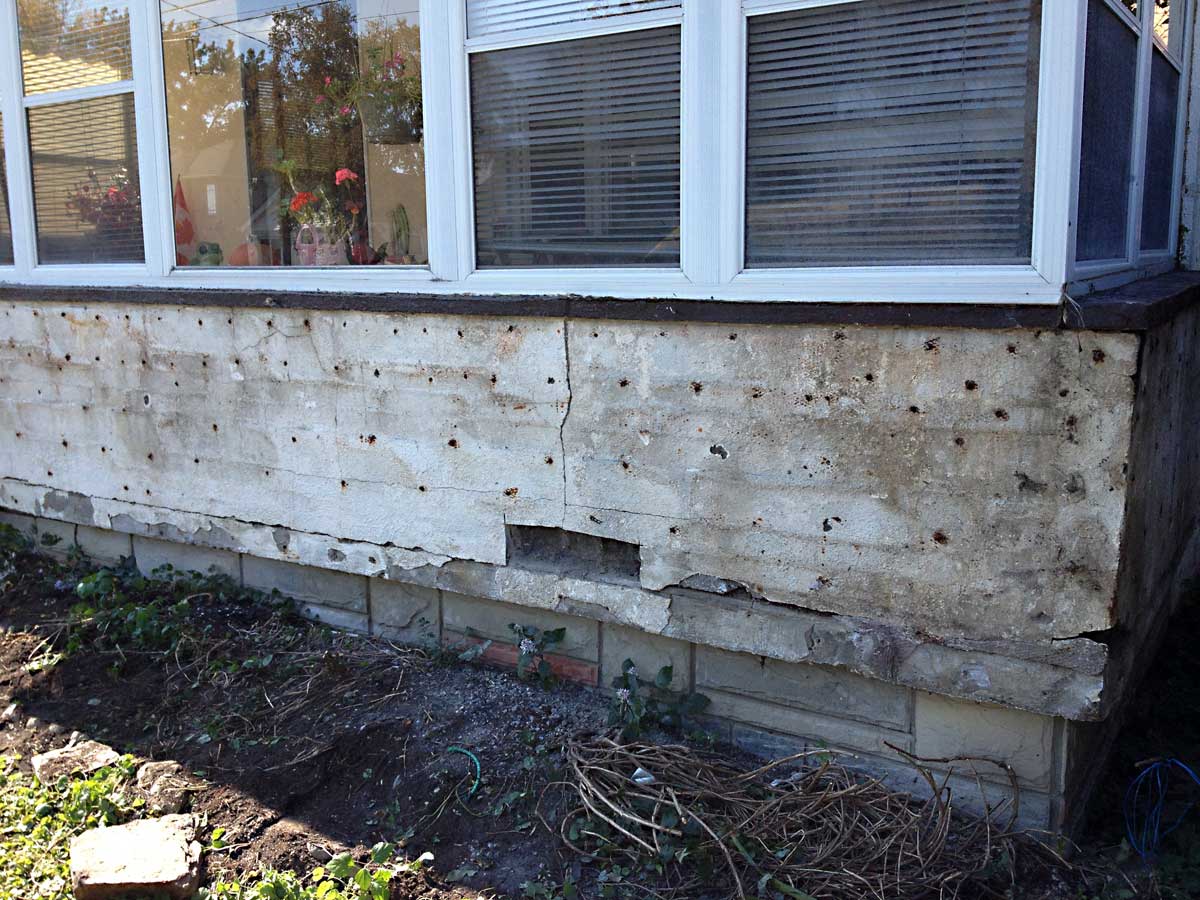

Ugly section: little masonry work needed: This was an area that was covered in parging which needed only minor repair but was ugly. The engineering of the house caused water to fall on the parging and brick work which was detrimental. I thought the area needed to be spruced up aesthetically. I suggested that my client get it covered in metal. He liked this solution so I put him onto Tony at Westwood Aluminium and they clad it. I think it looks smart and it is now aesthetically pleasing / nicely protected.
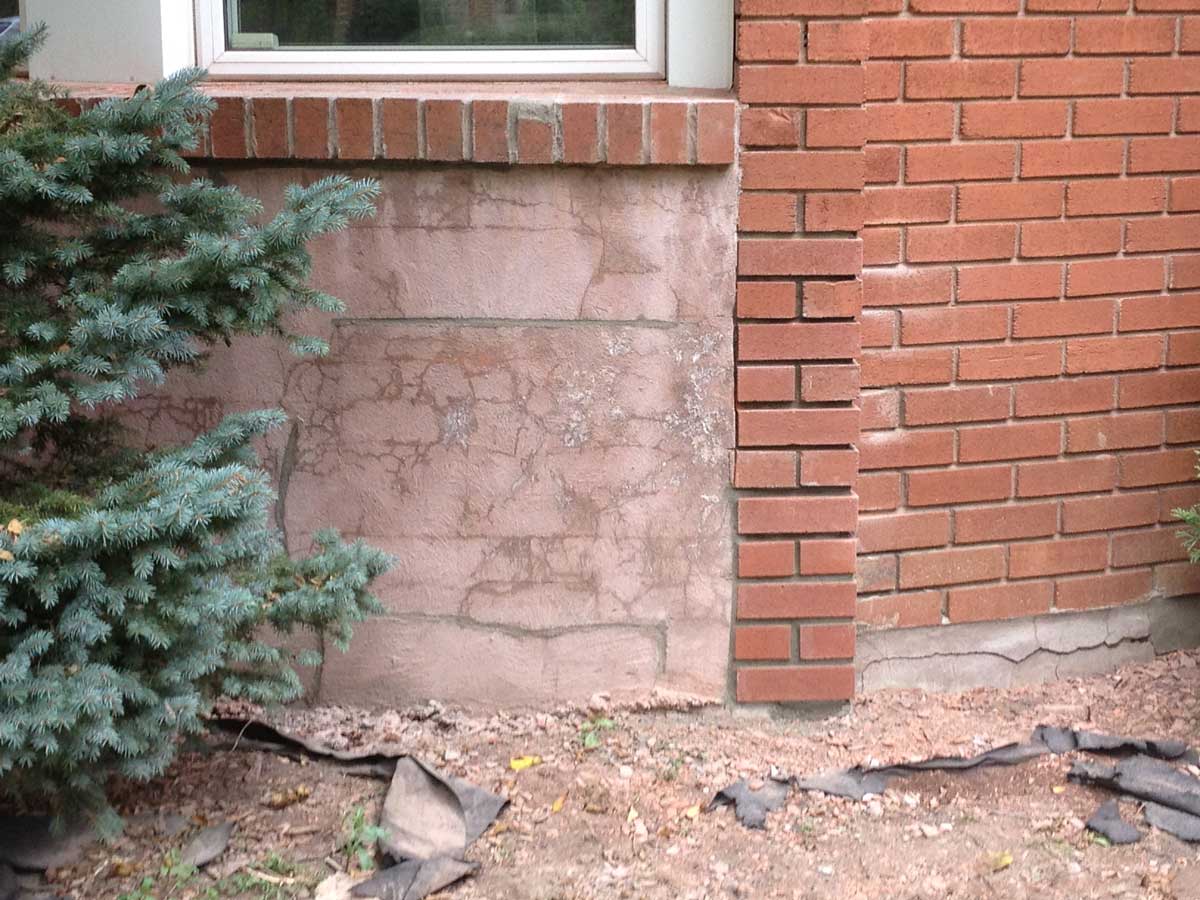
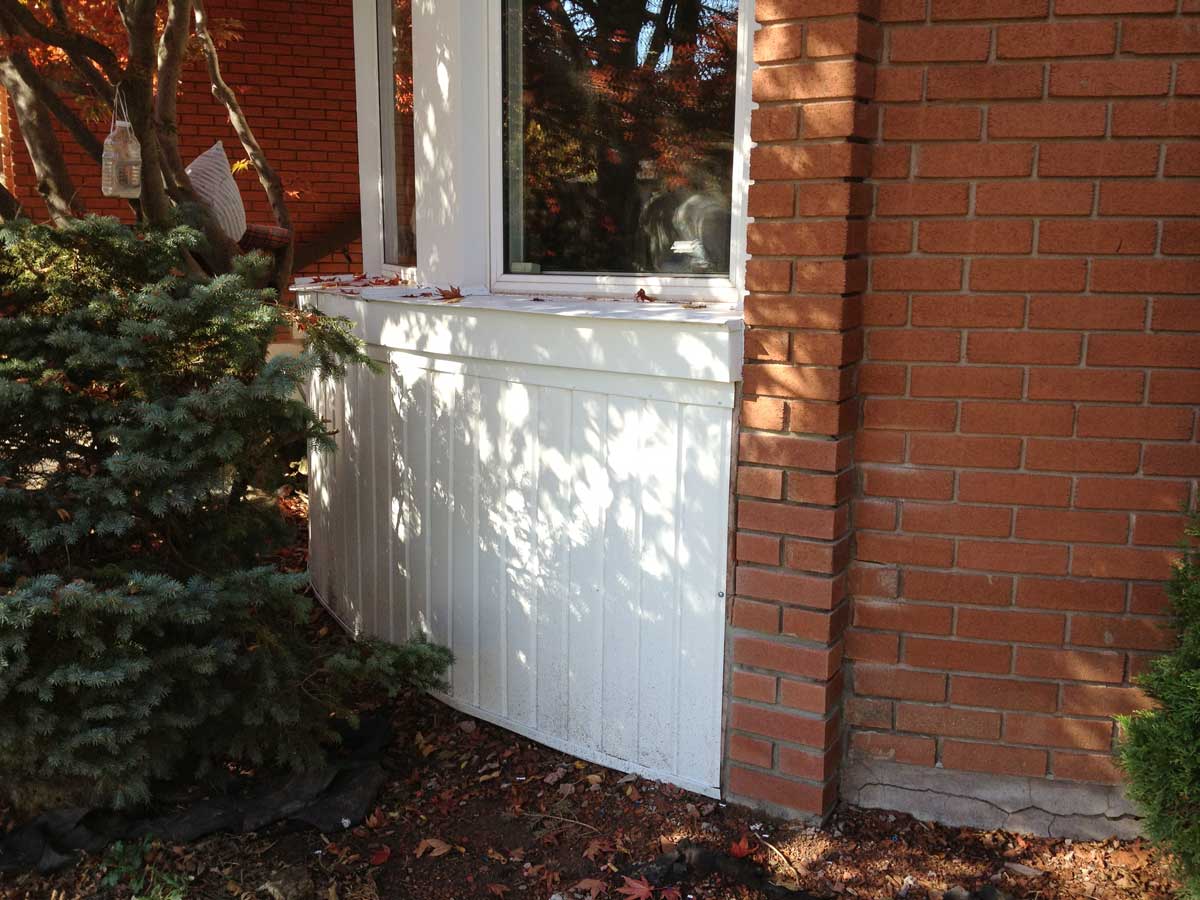
Parging on a lower wall “After"

Elaborate scaffolding set up for chimney restoration: sometimes access is a problem. I own scaffolding to build to reach the work safely.
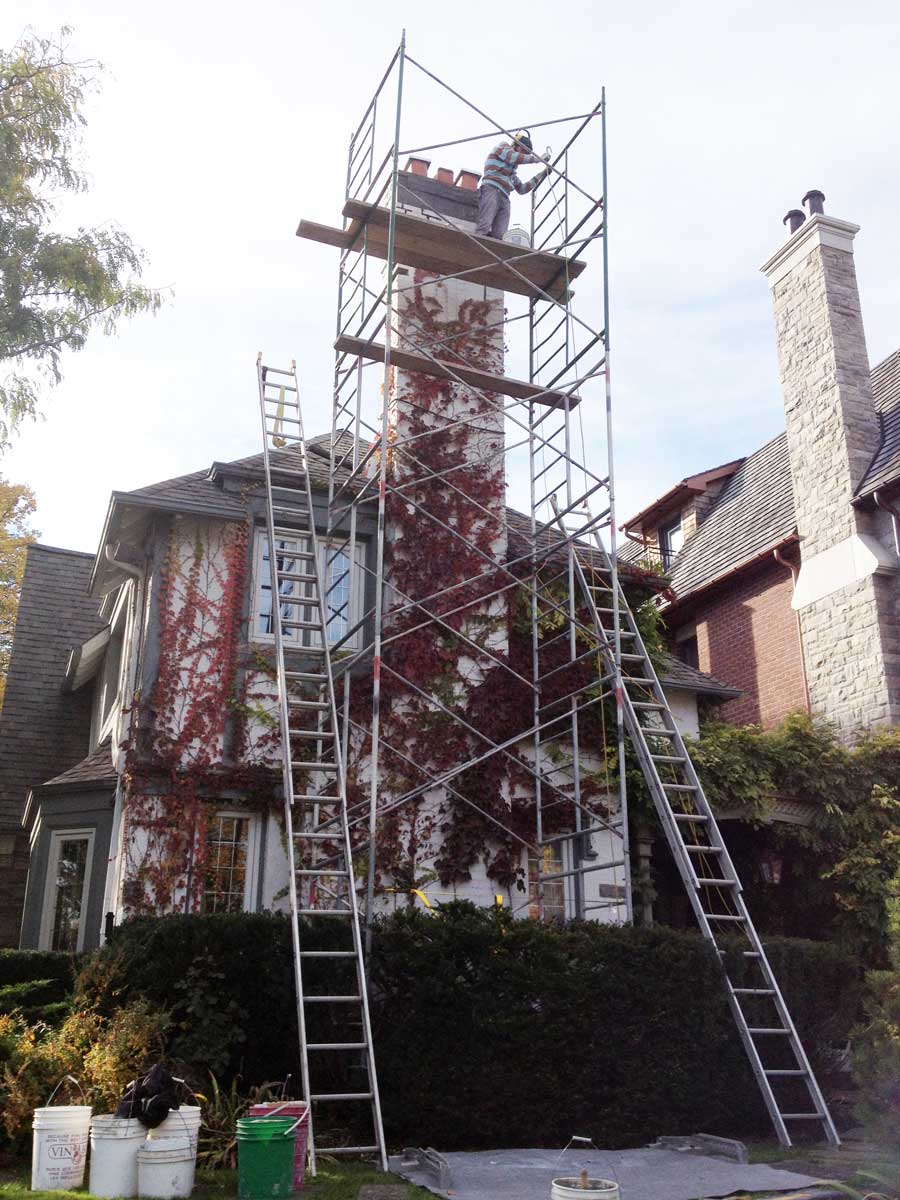
Replacing stone in a driveway: my previous client (a few times over) needed driveway stones replaced due to the neighbours renovation (heavy trucks) running over his property during their massive renovation and landscaping work. The new stone will oxidize like the others in time.
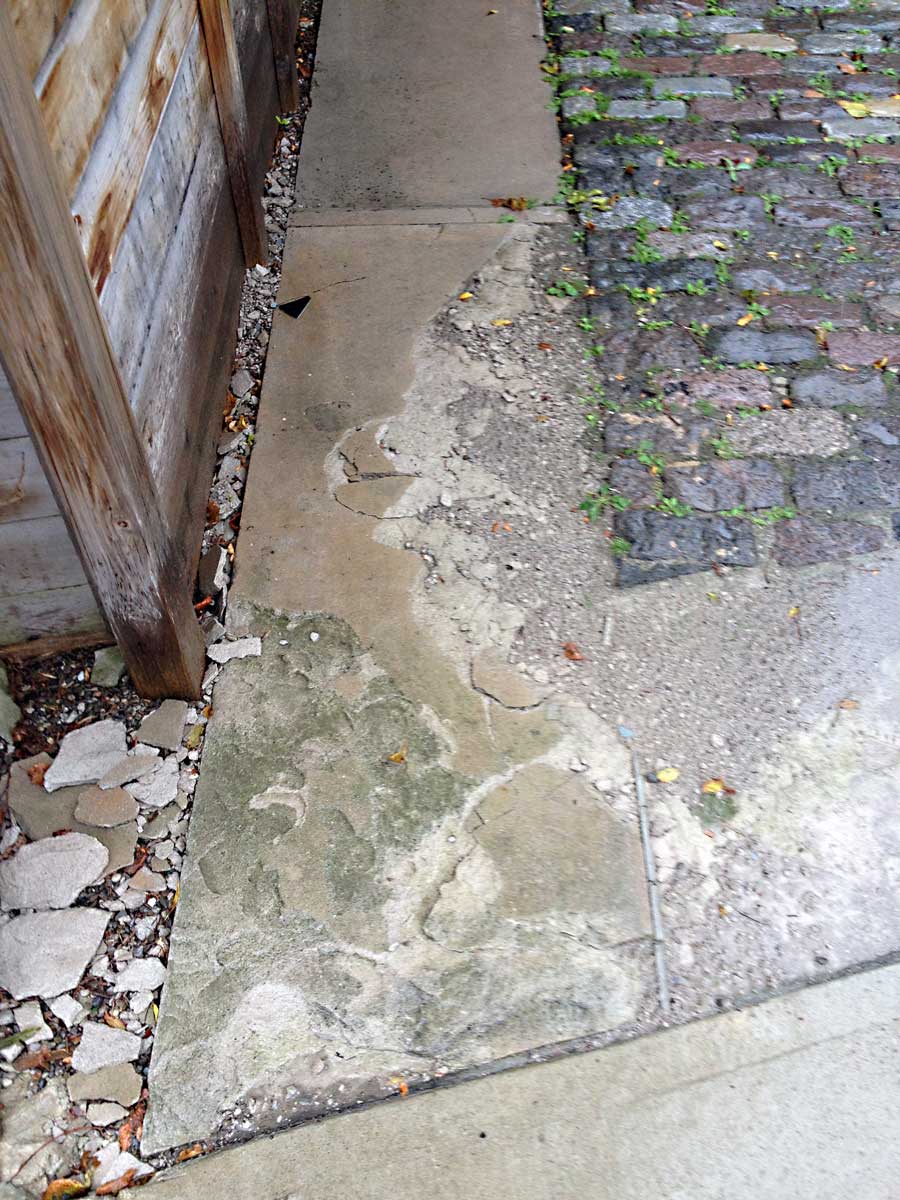
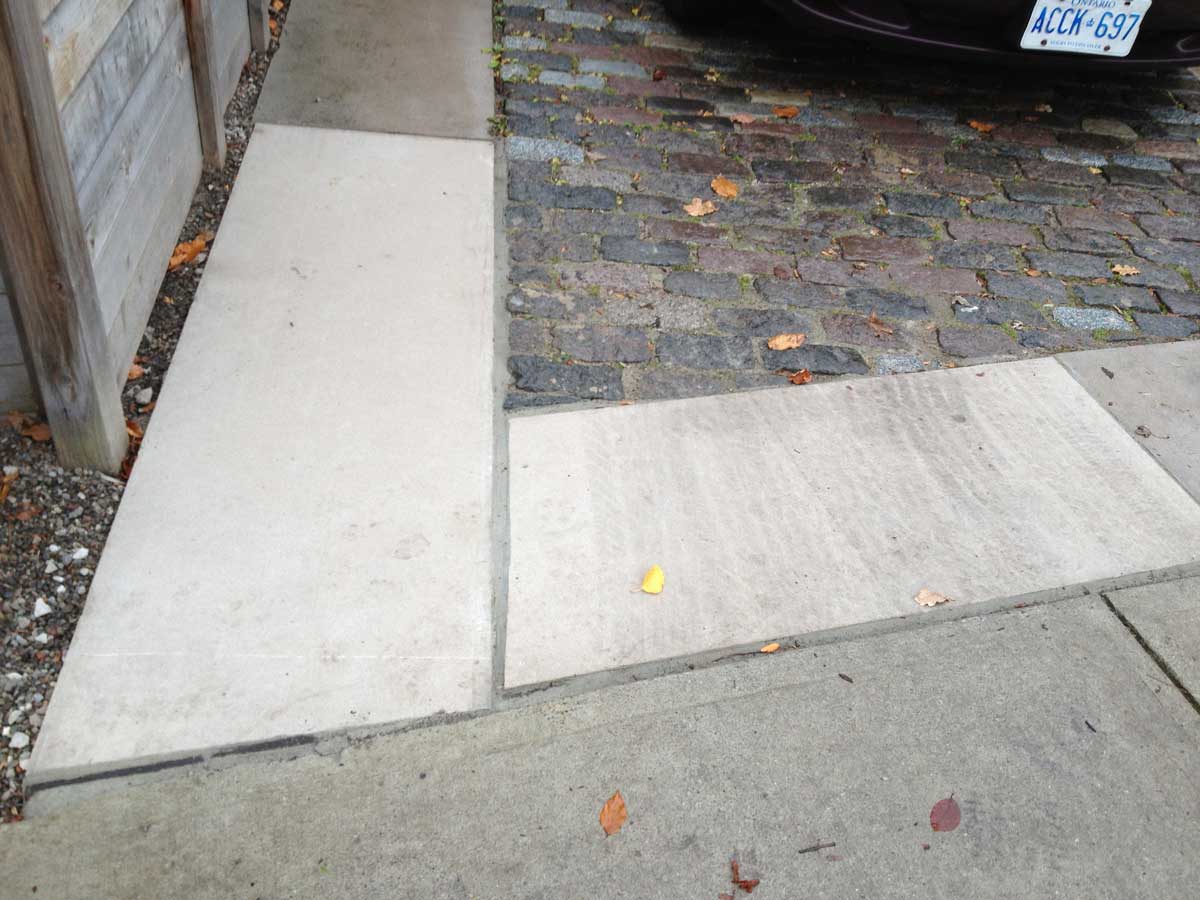
Garage-End restoration: I developed this solution some years ago, where the garage walls end at the driveway on each side of the garage door, the bricks can go bad. I decided to add solid concrete pieces in these areas to give the restoration tens of years to last. Bricks aren’t as substantial as the solid concrete pieces I employ.
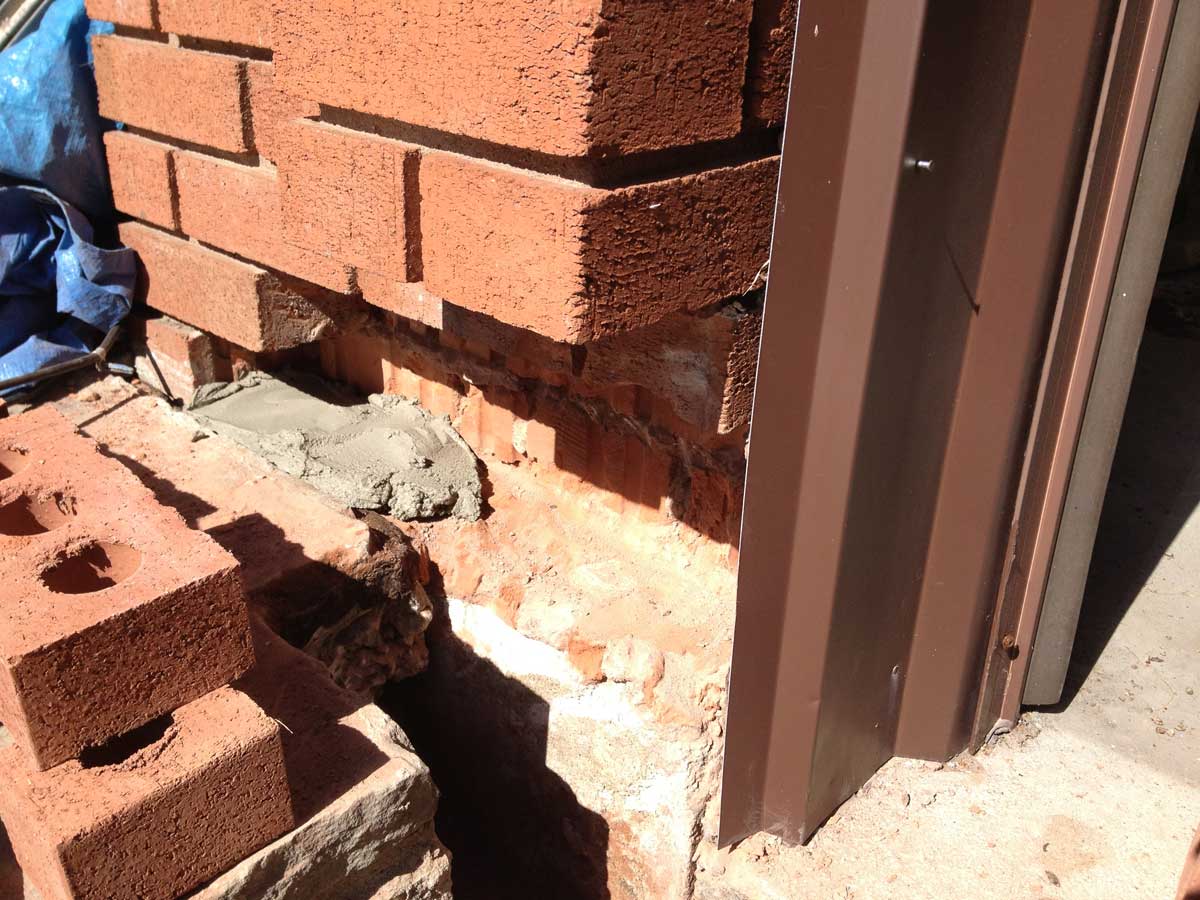
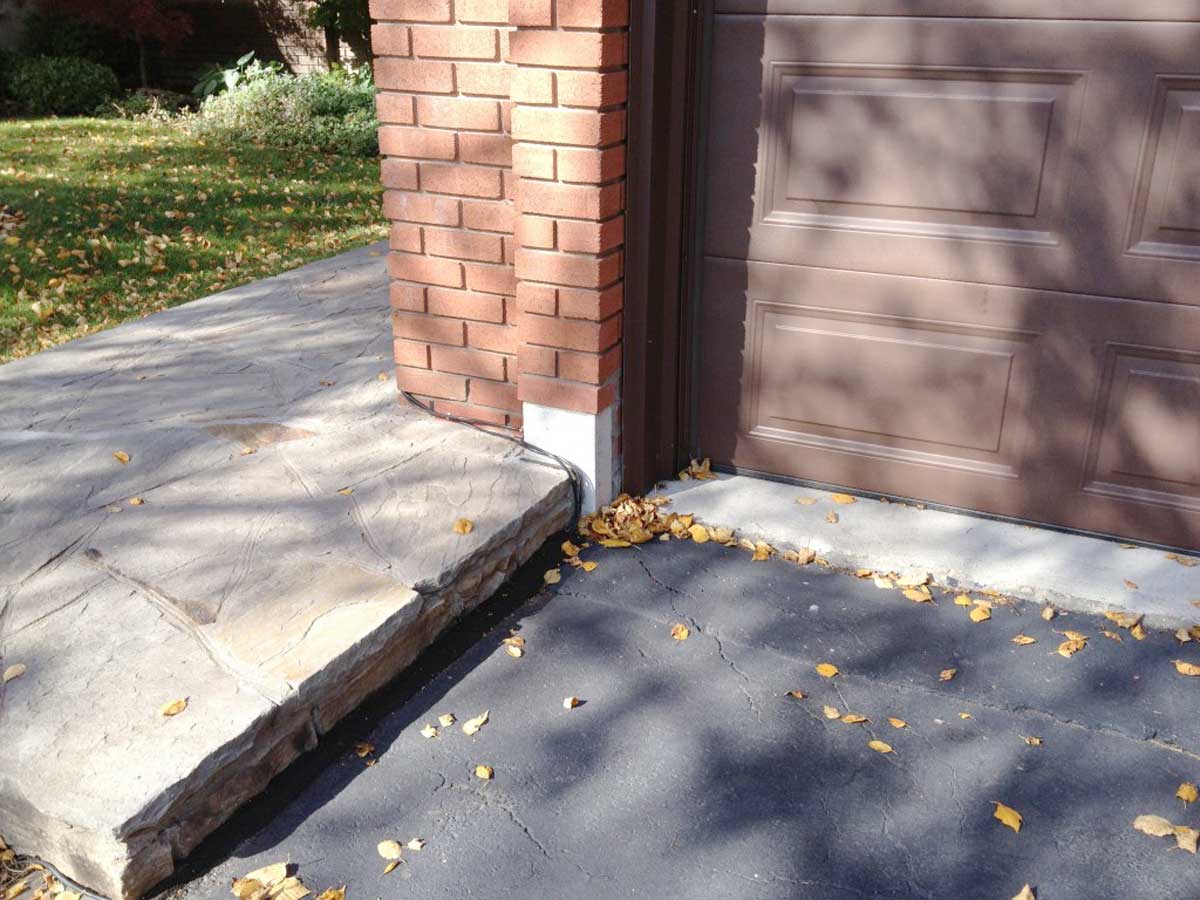
Milk box removal: before and after bricking in a milk box.

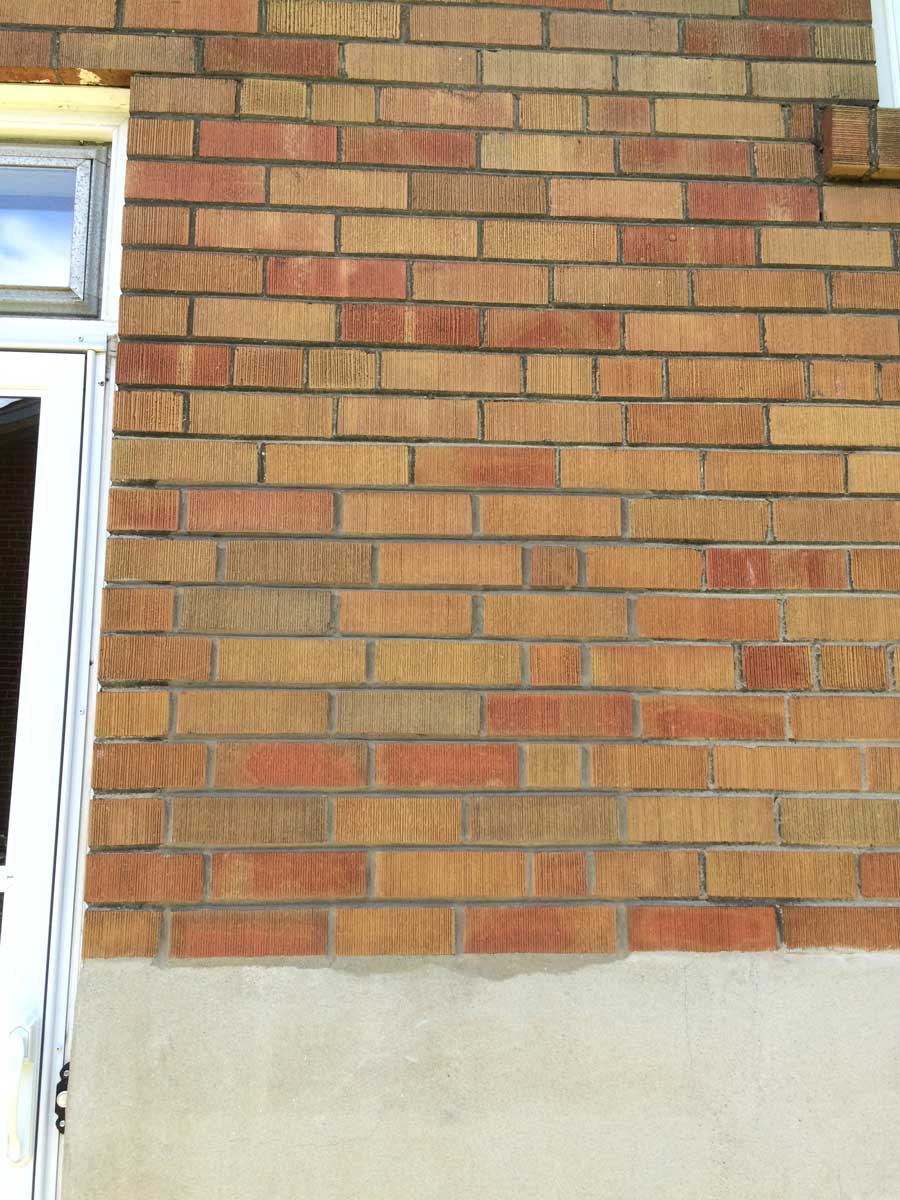
MASONRY SPECIALTY
SERVICES — why it matters.
Sometimes you may think that a particular repair has to turn into something very extensive, I am here to tell you that's not always the case as seen in my above work. Click below and let's talk.
